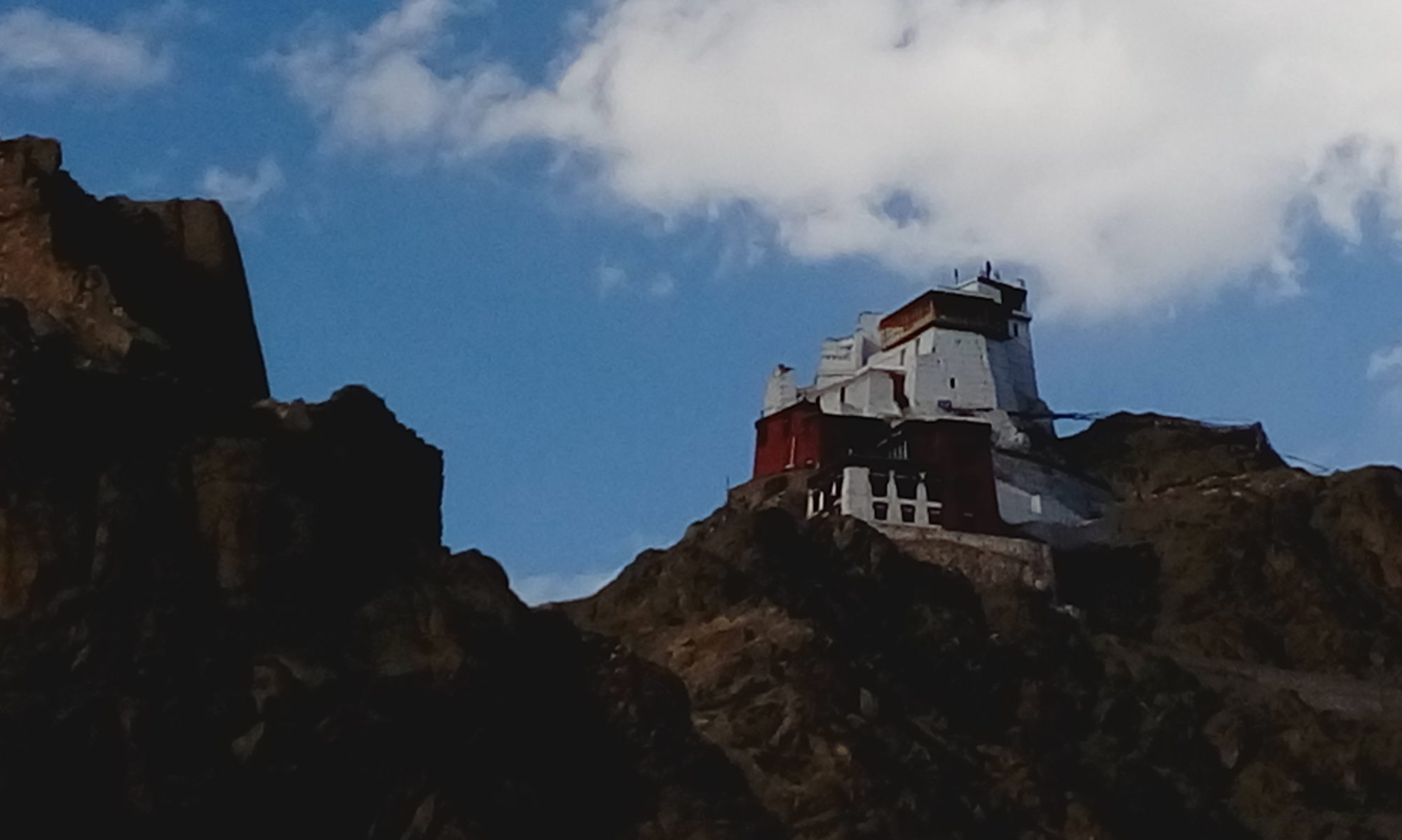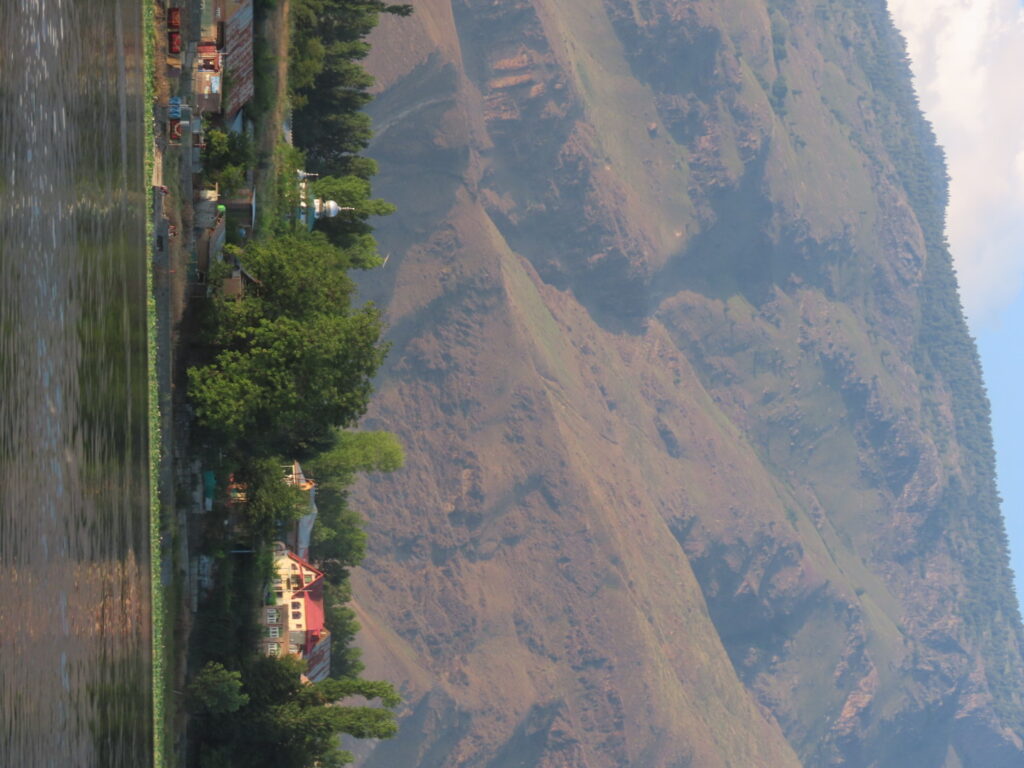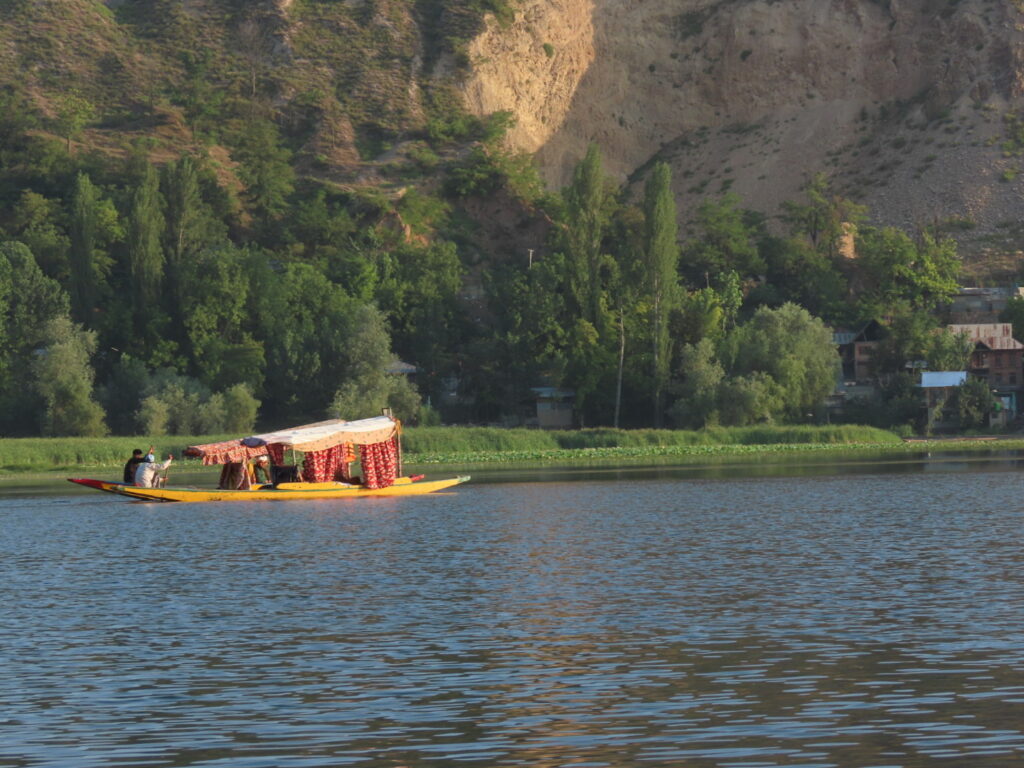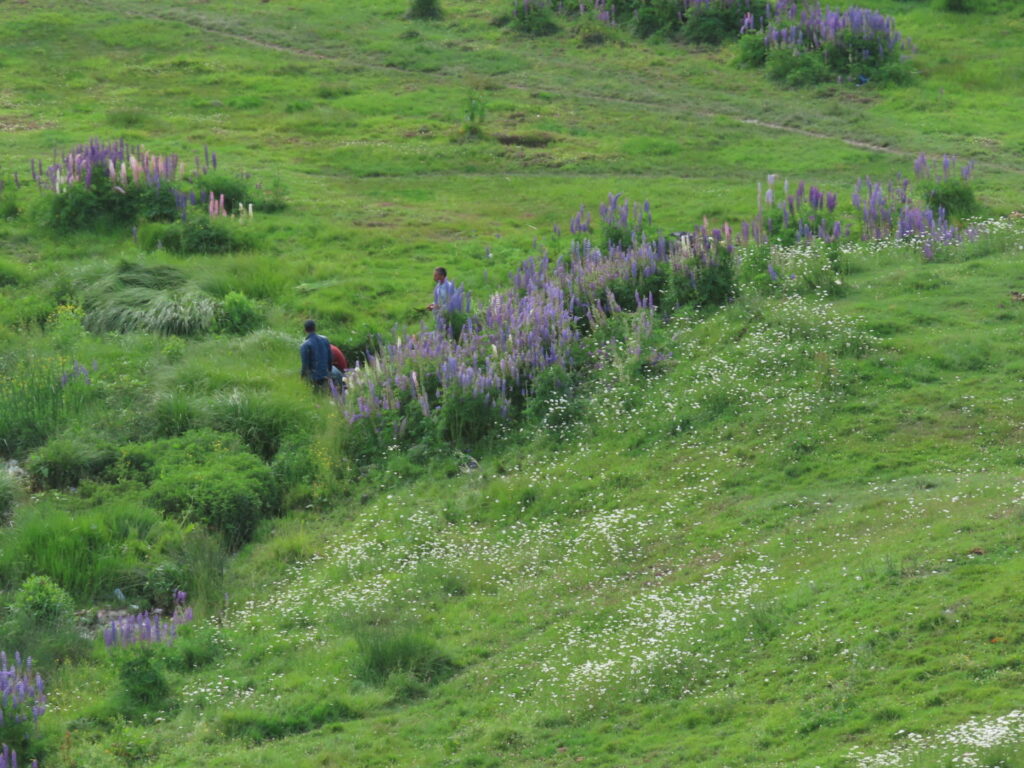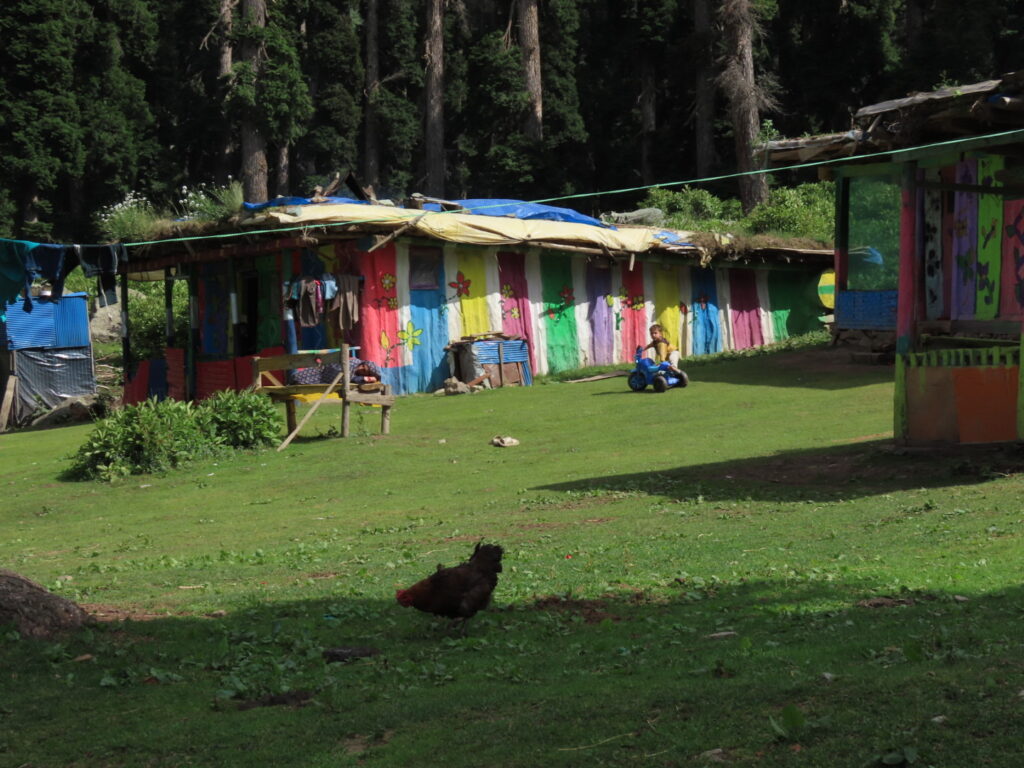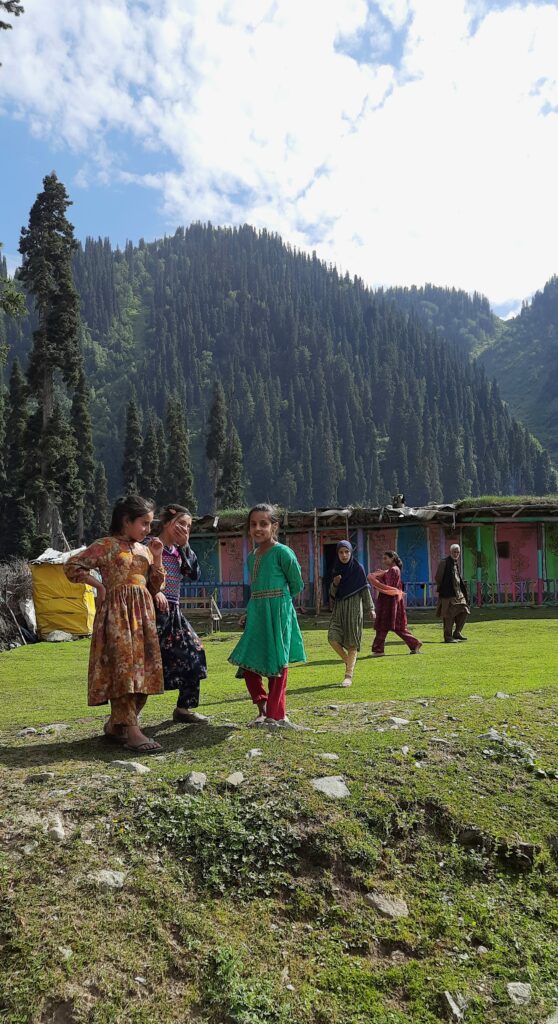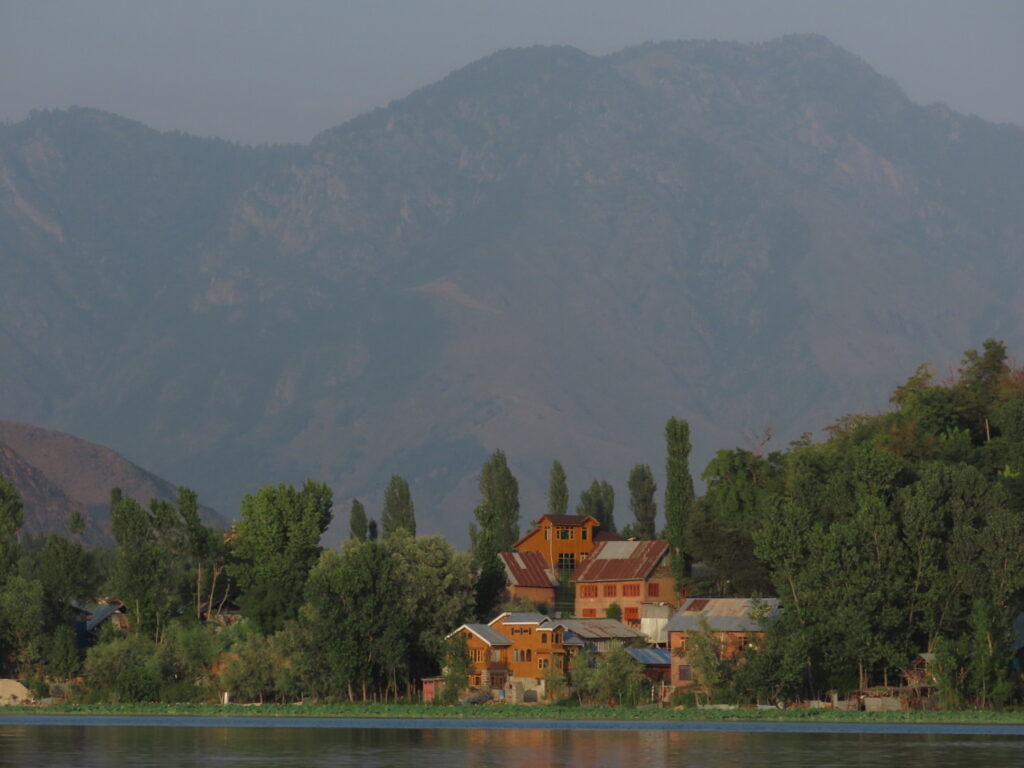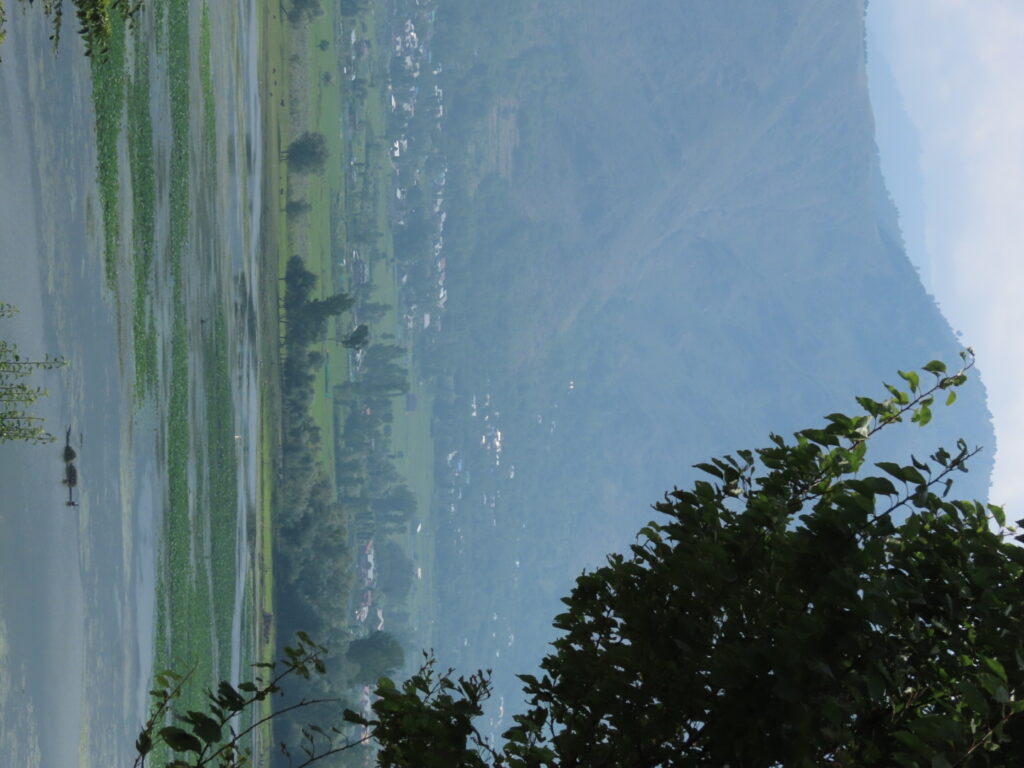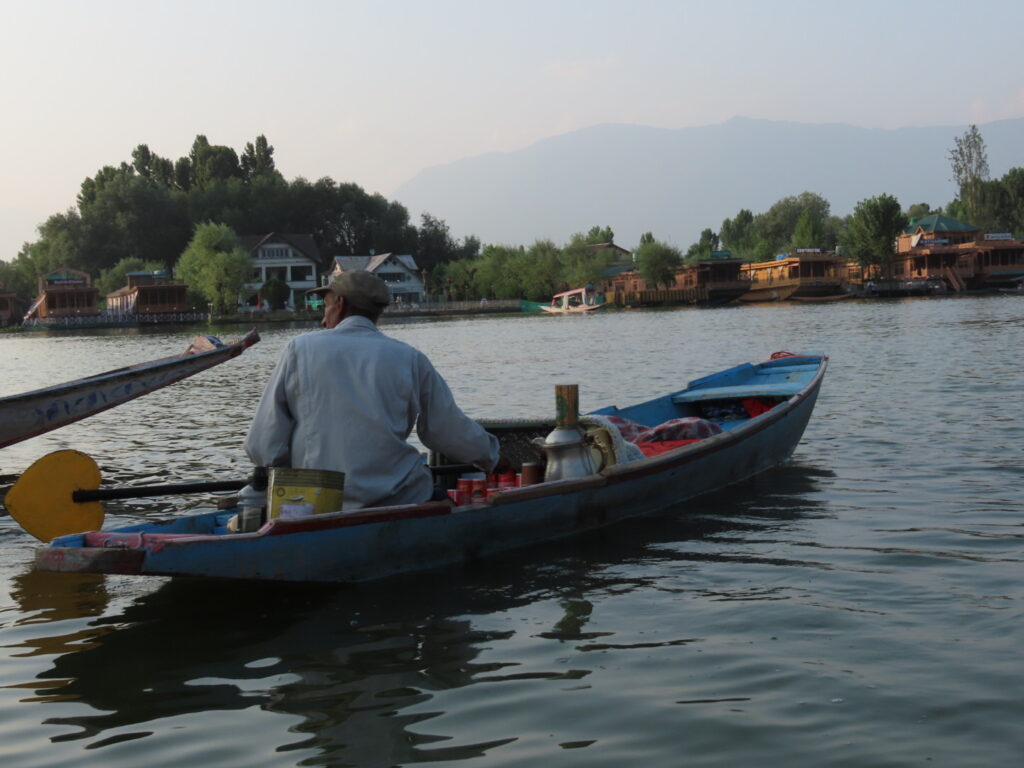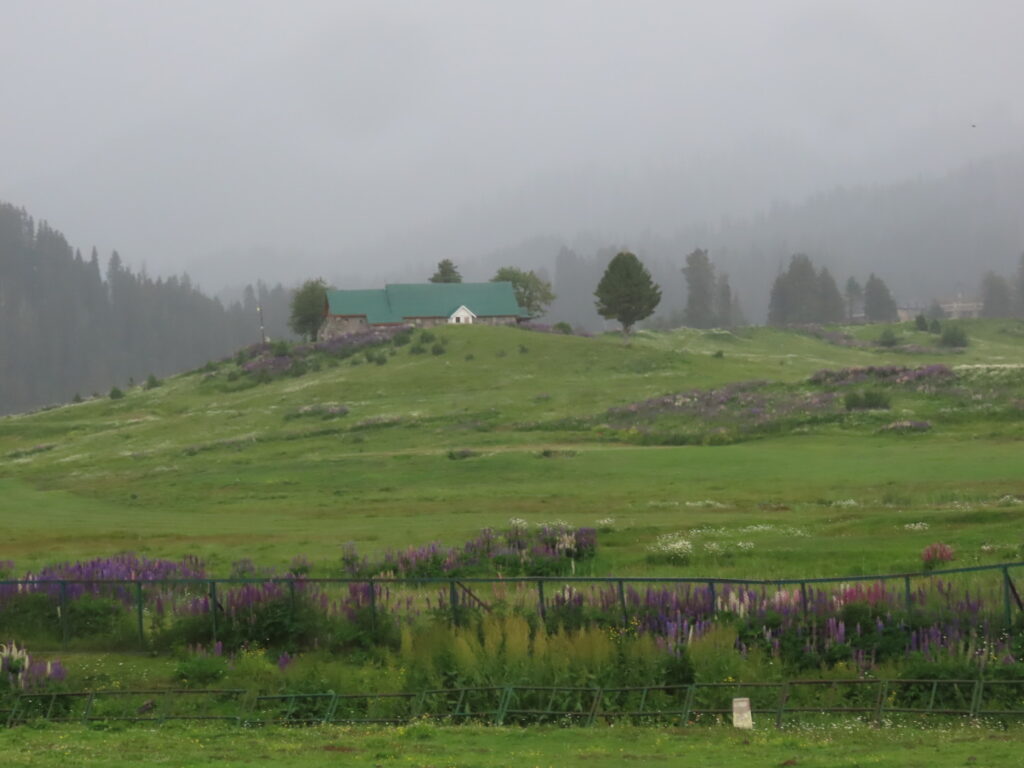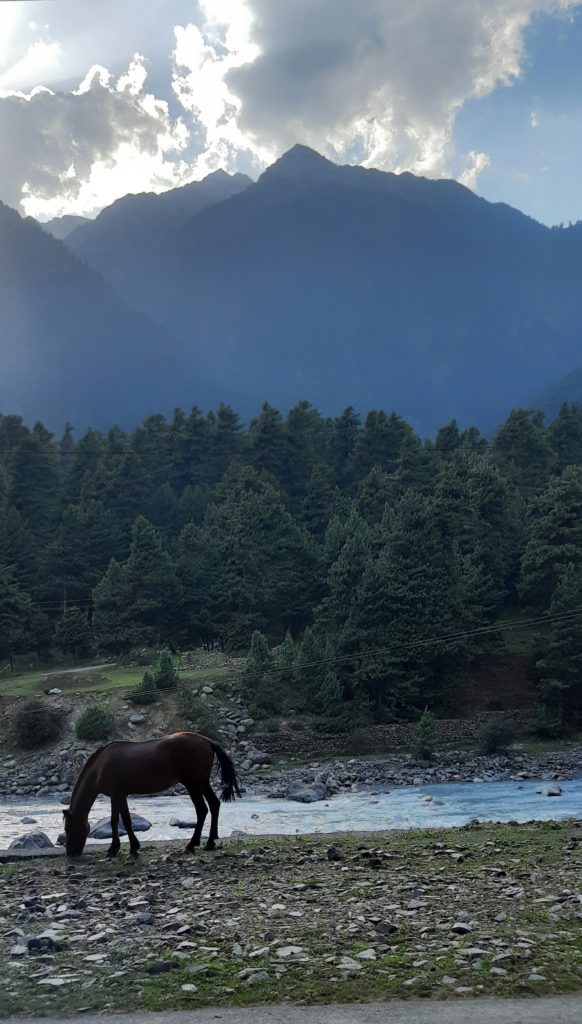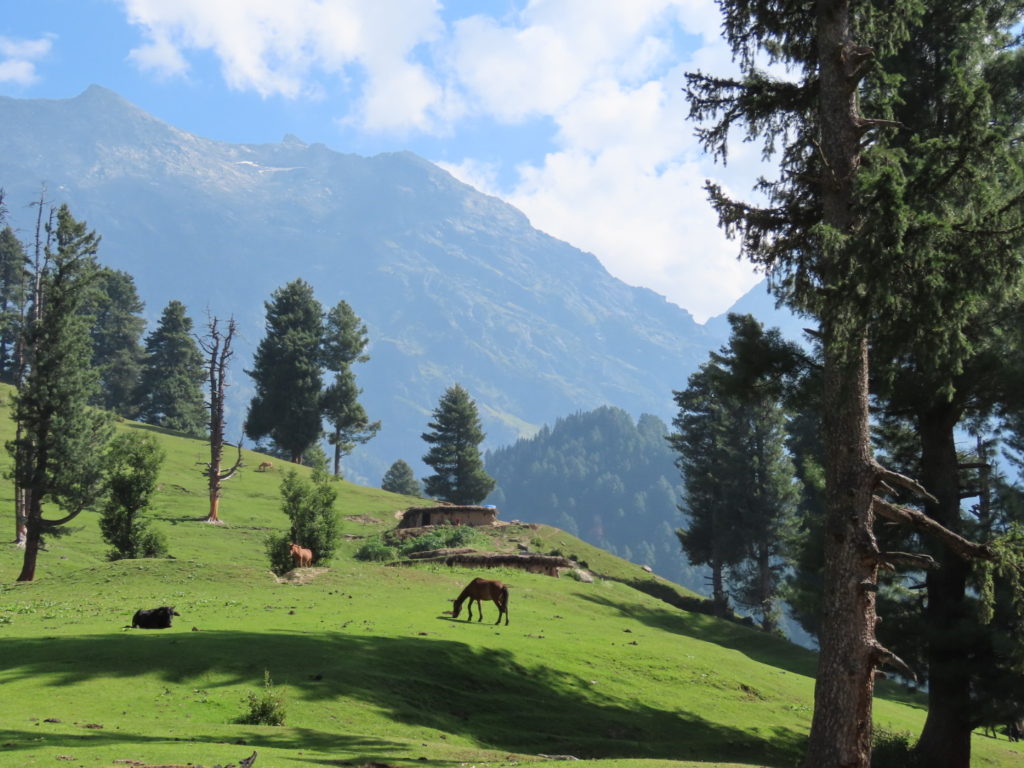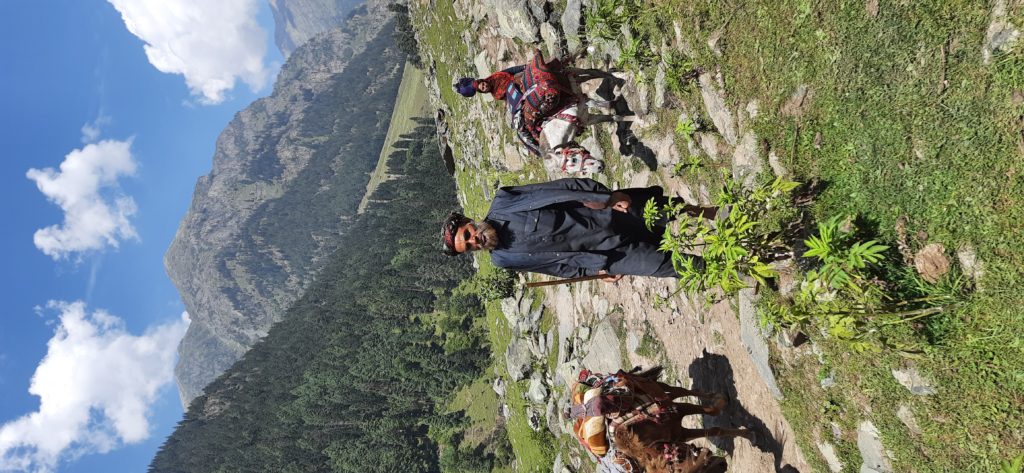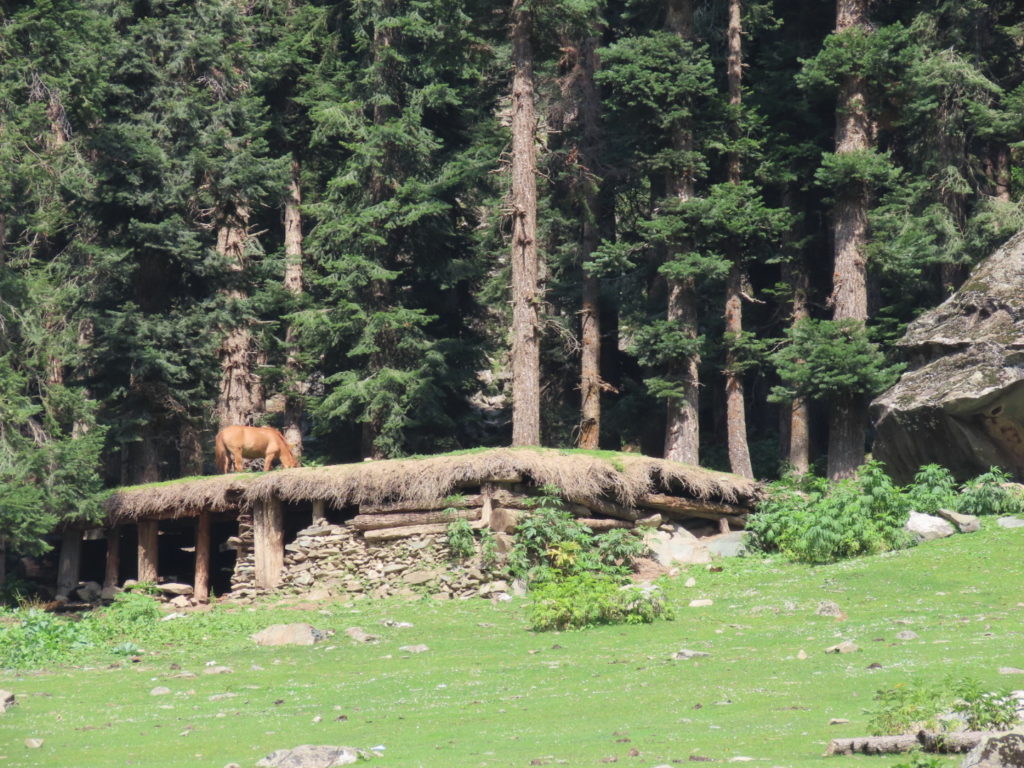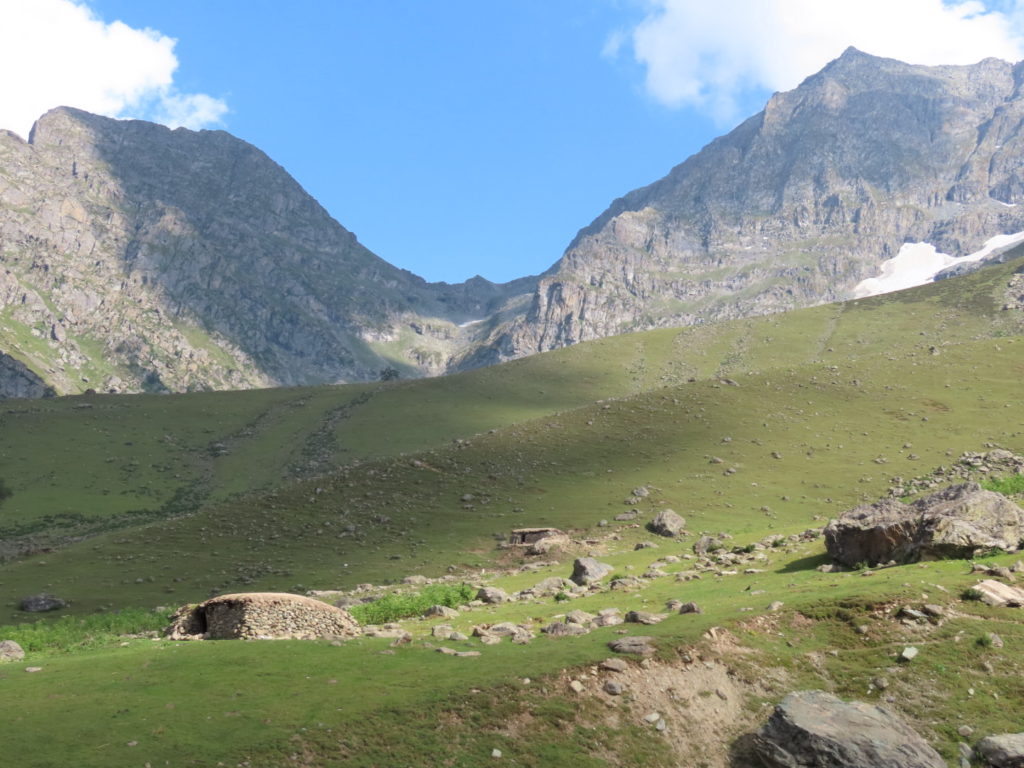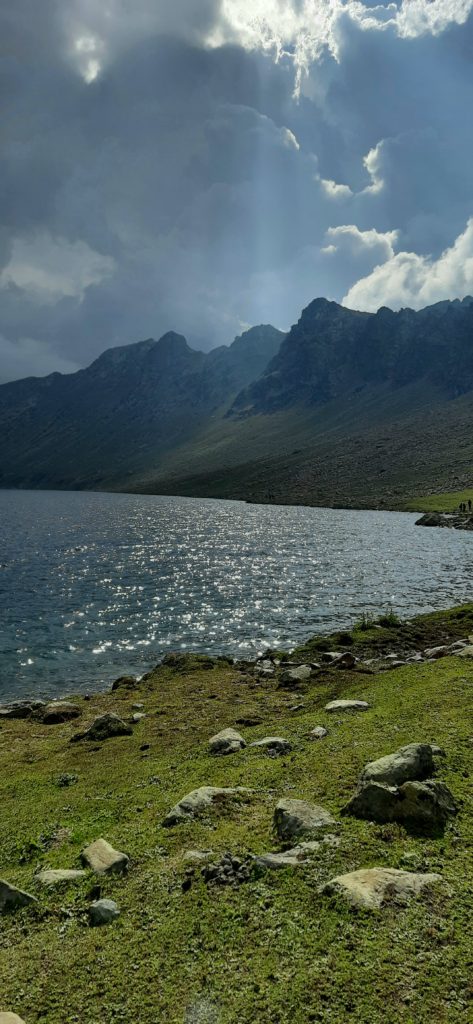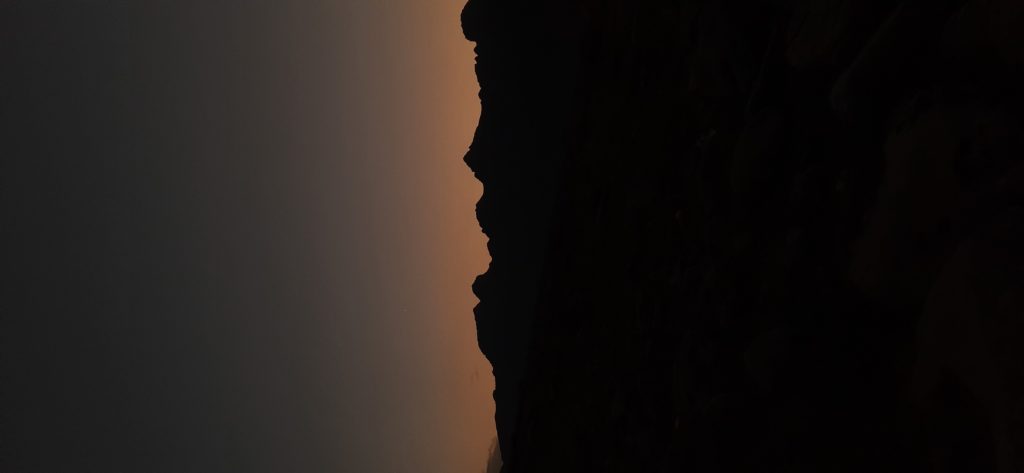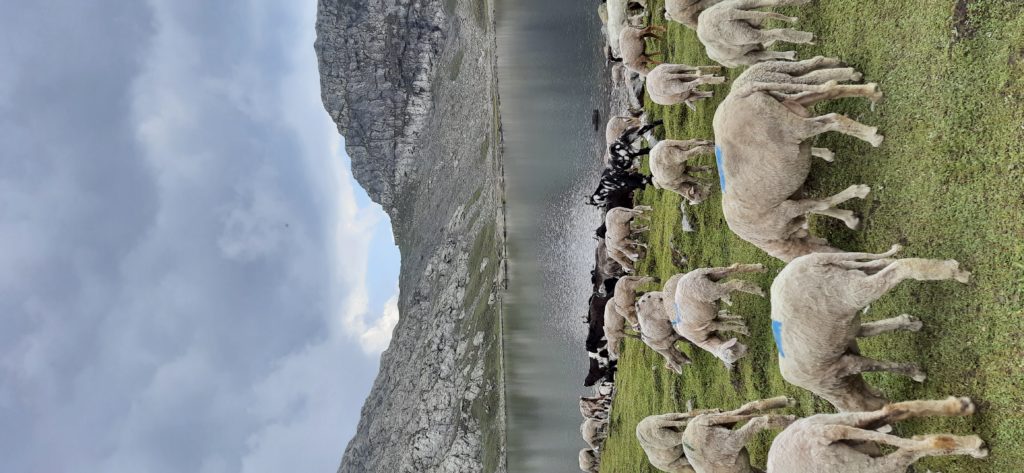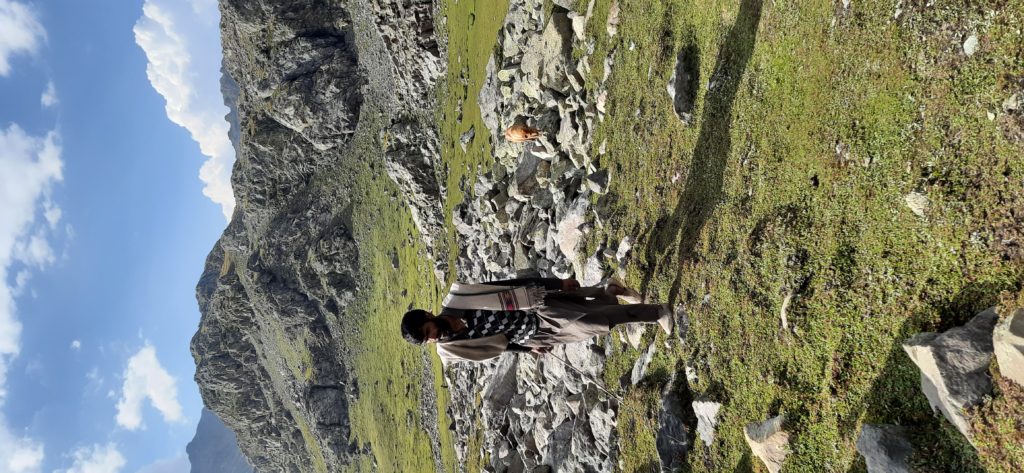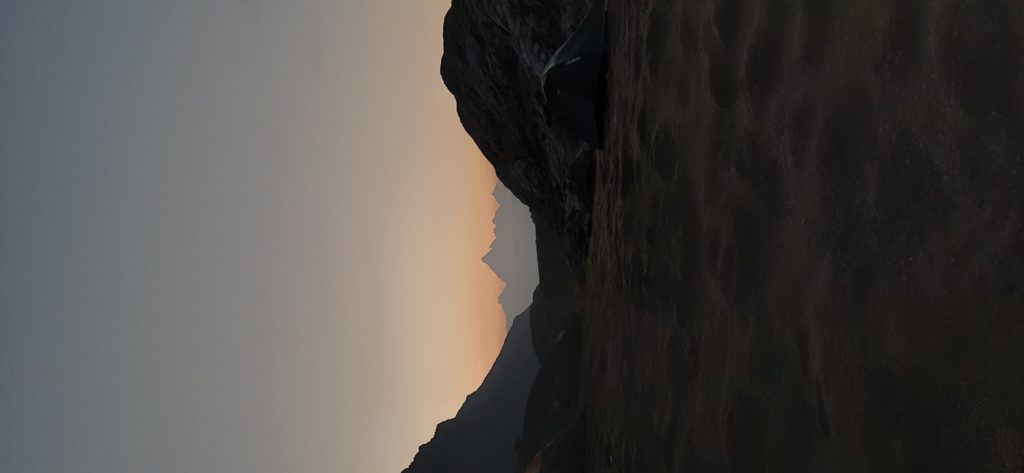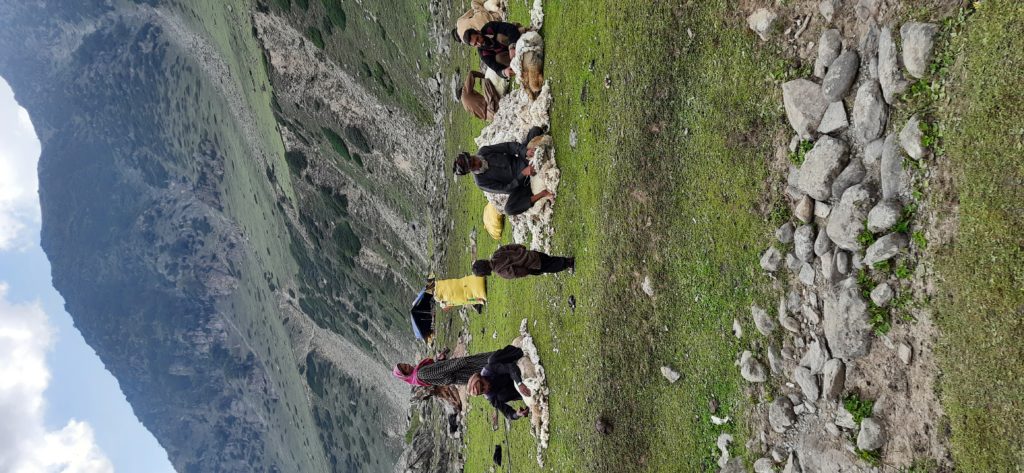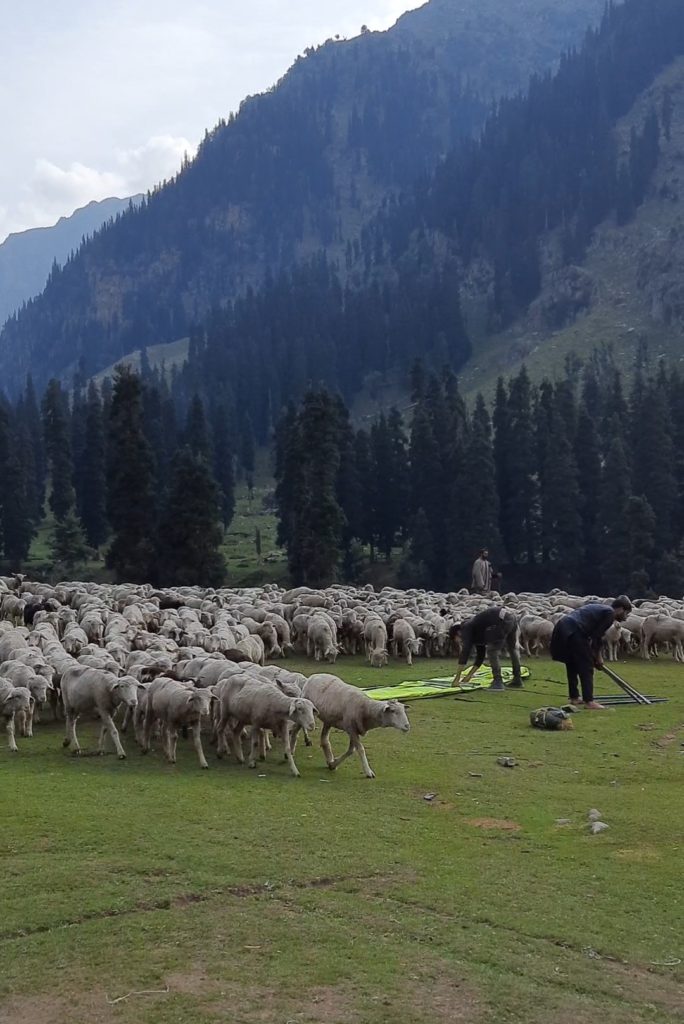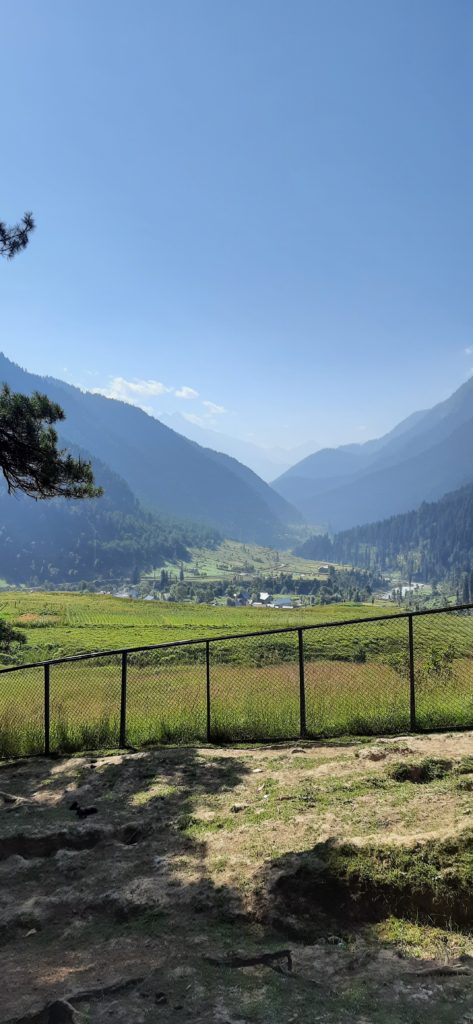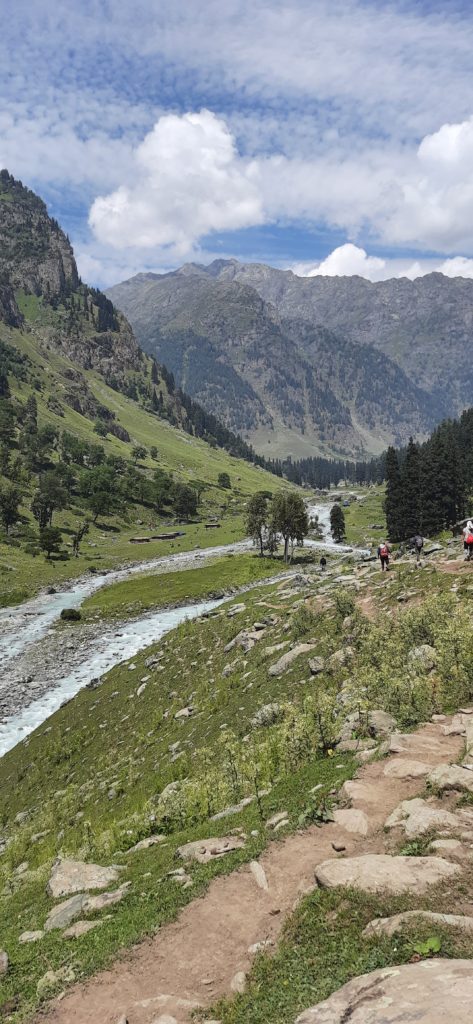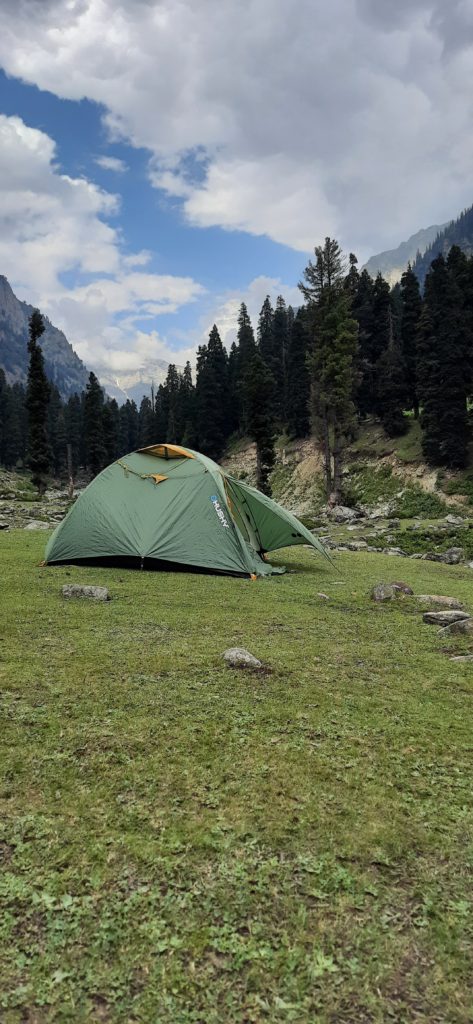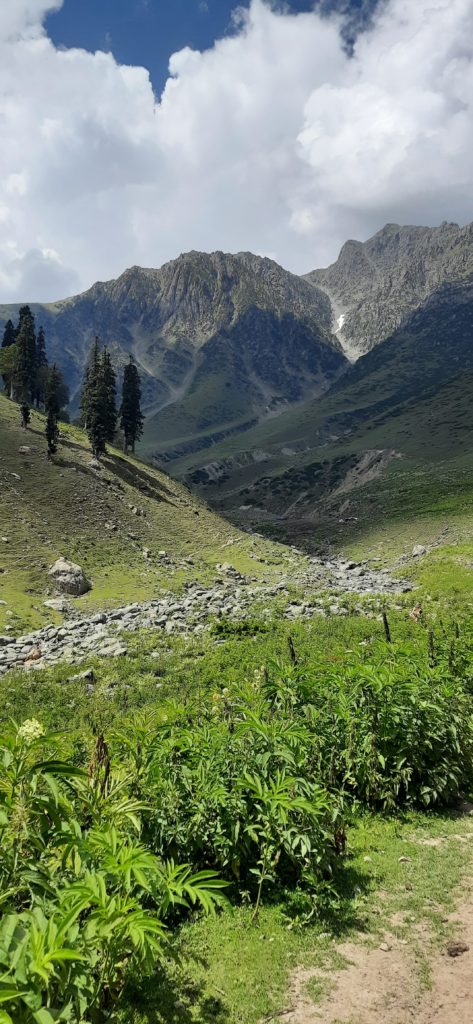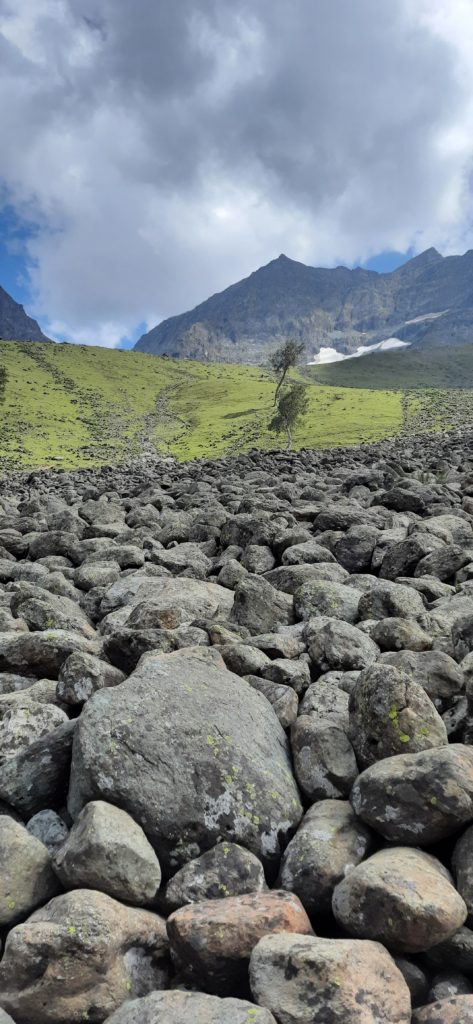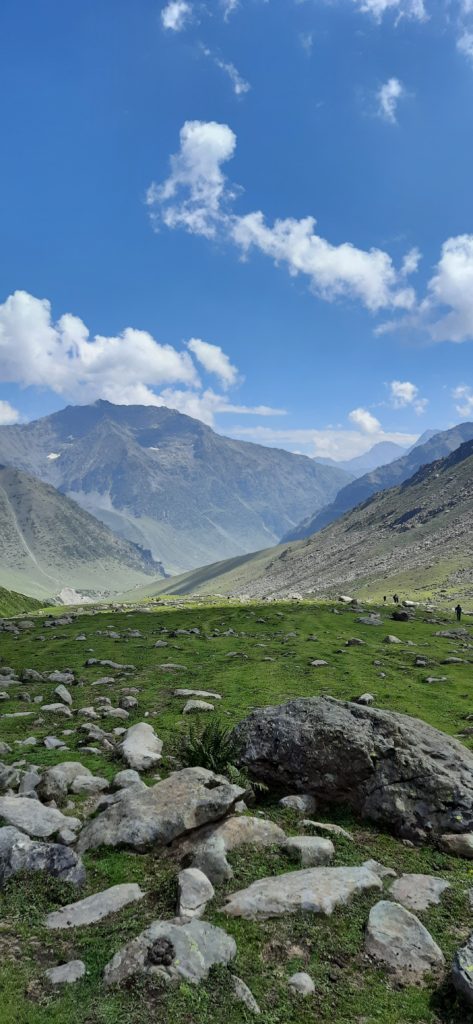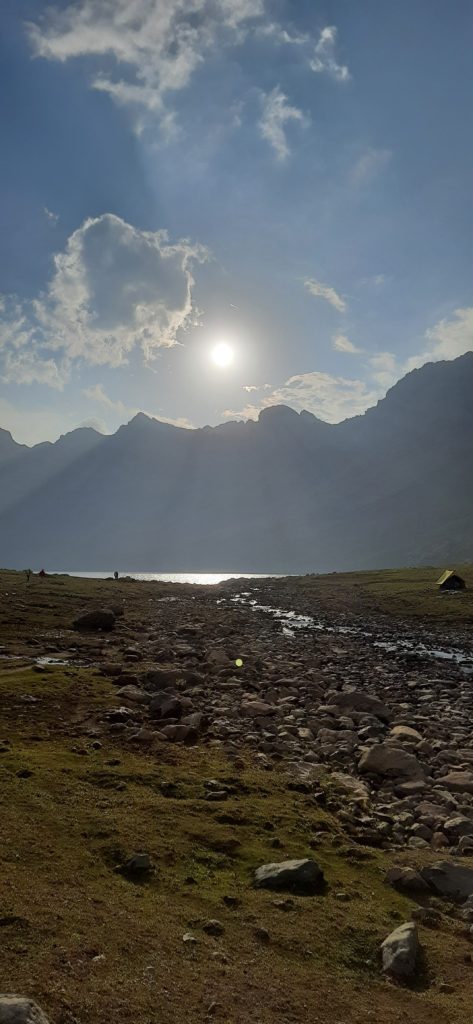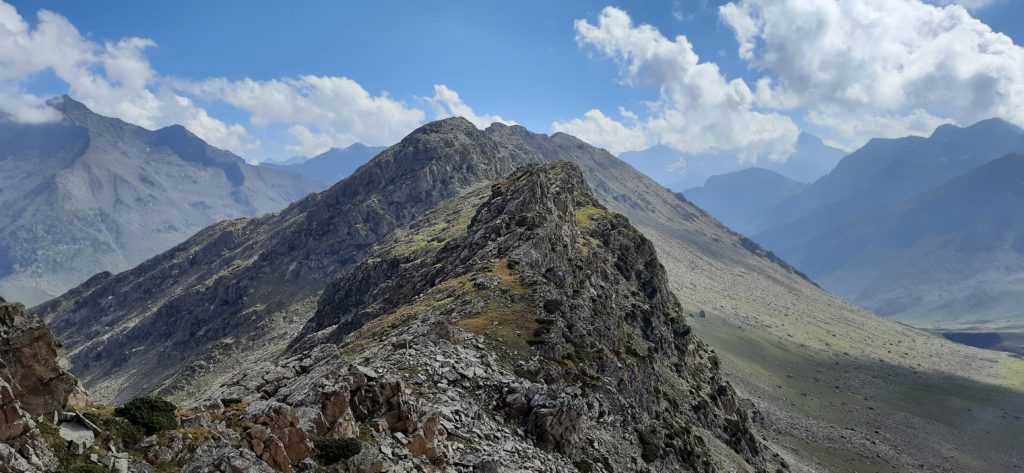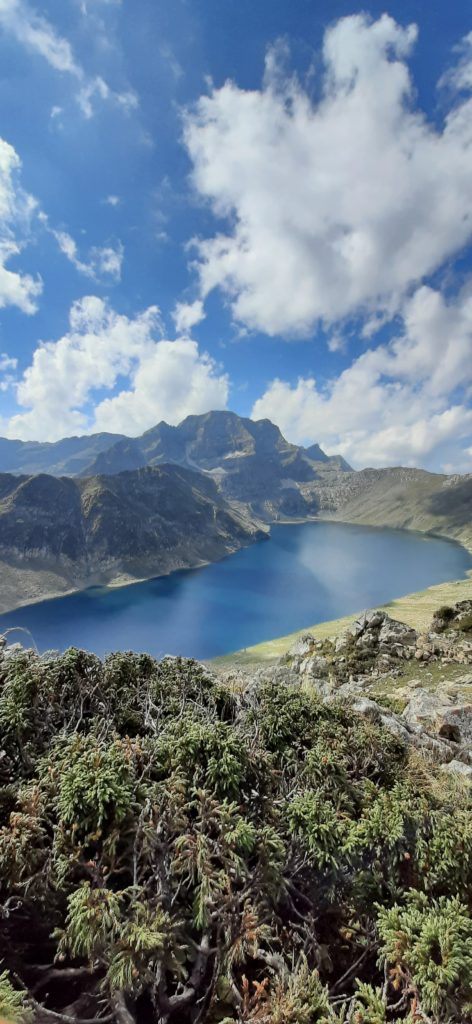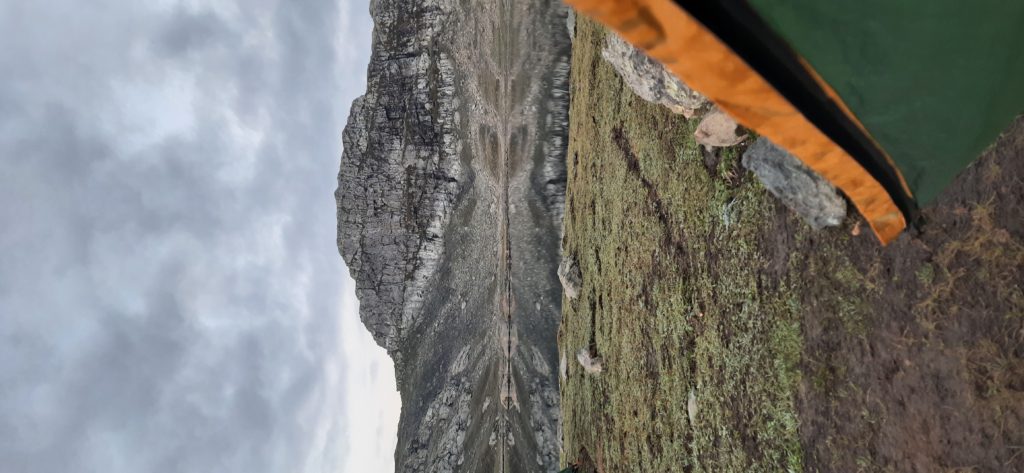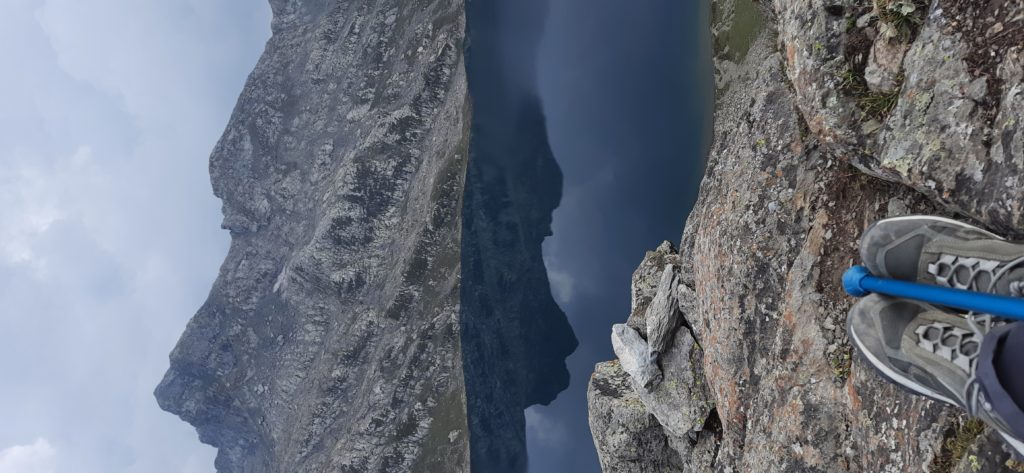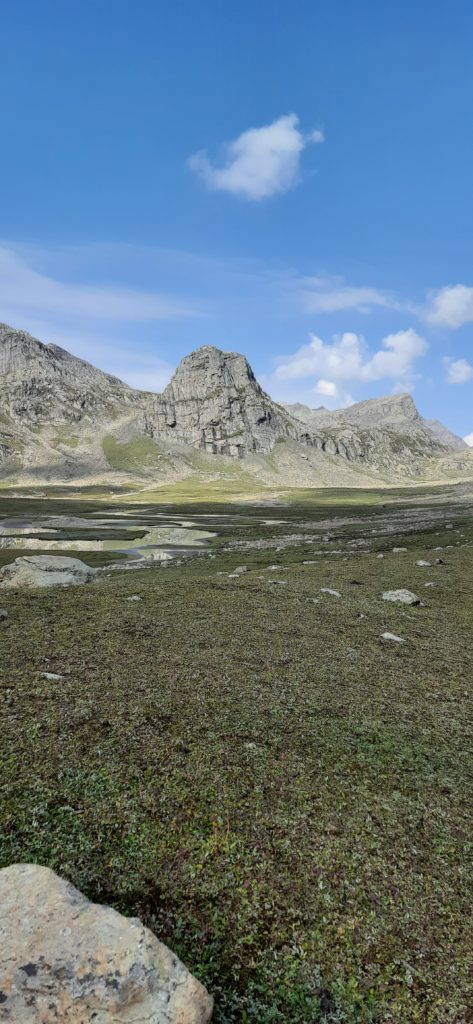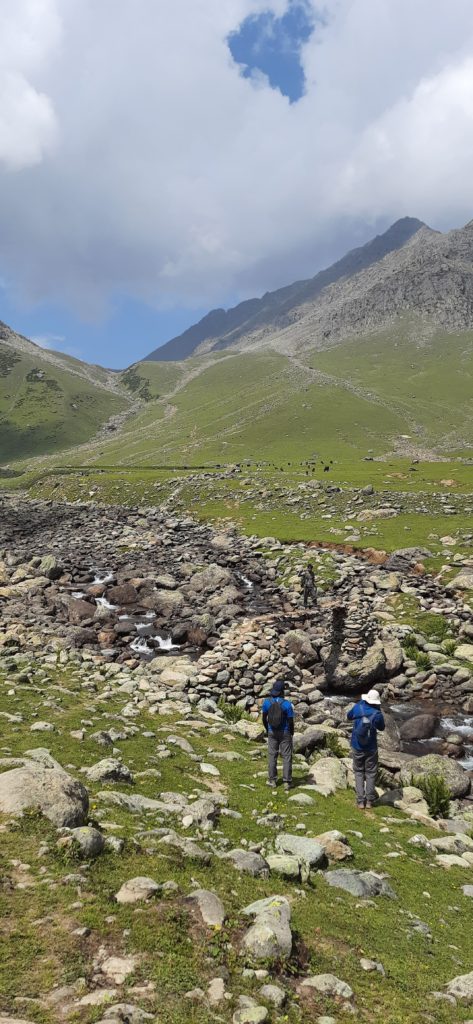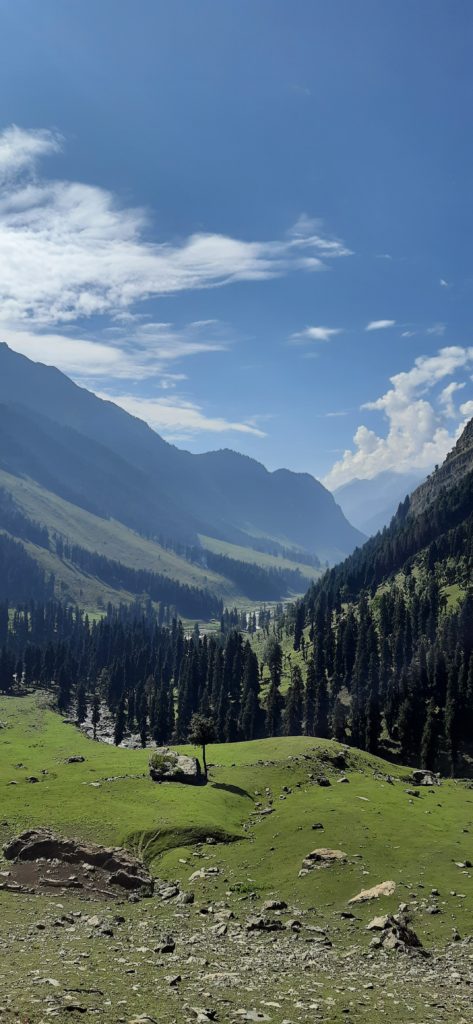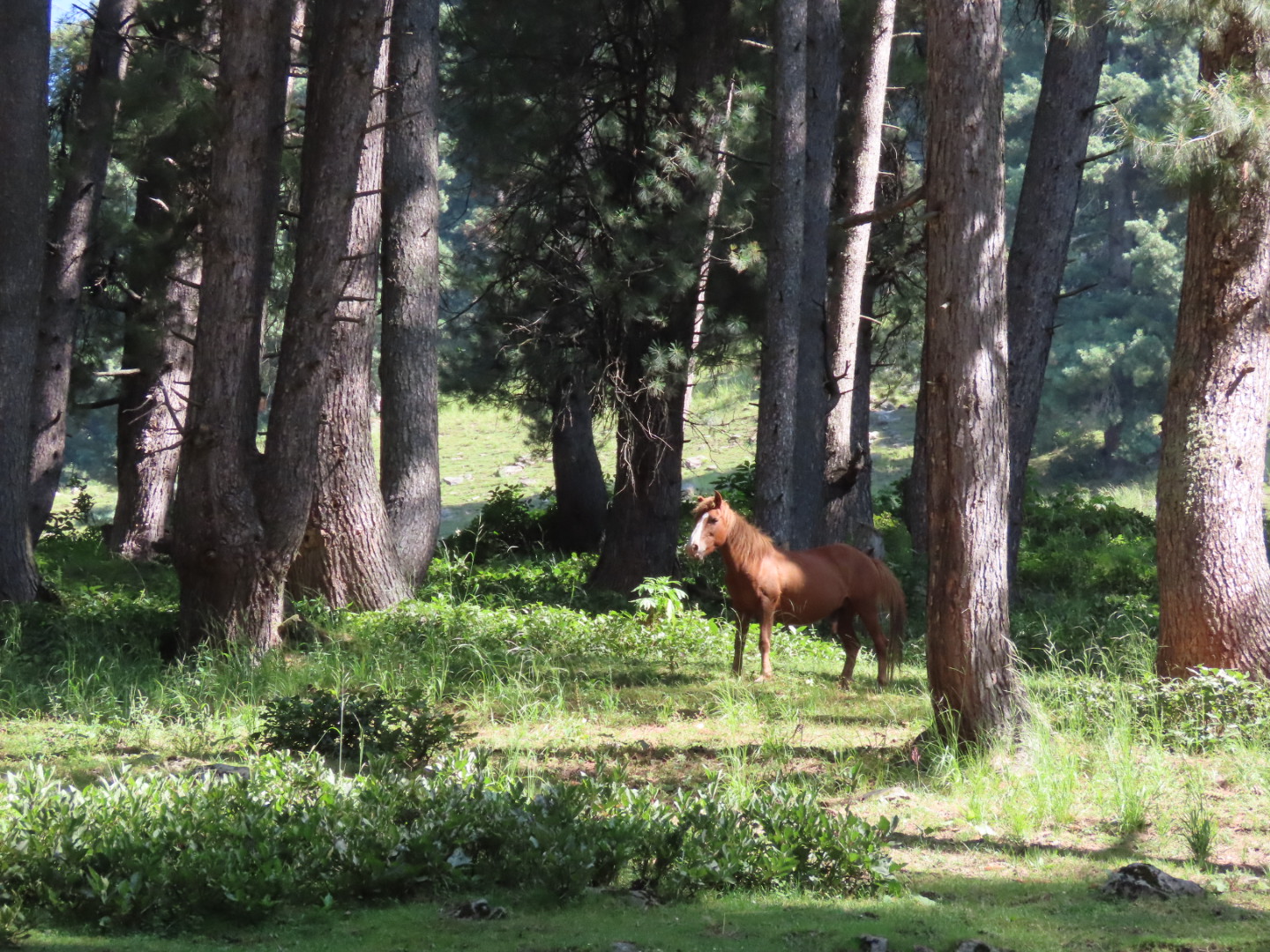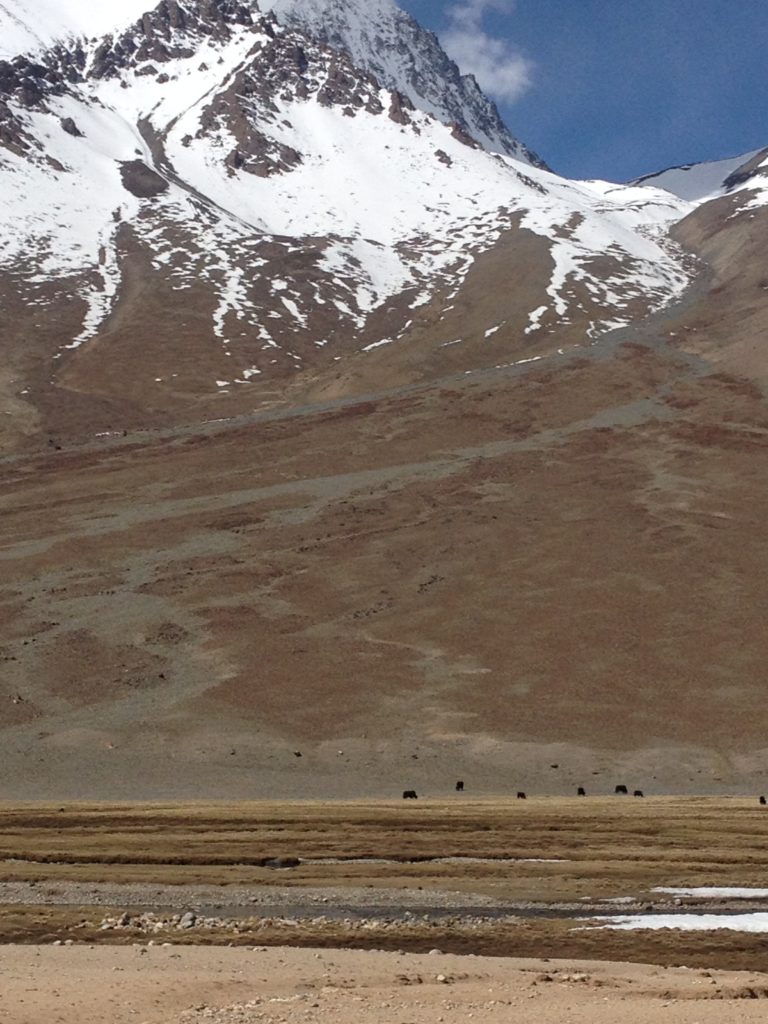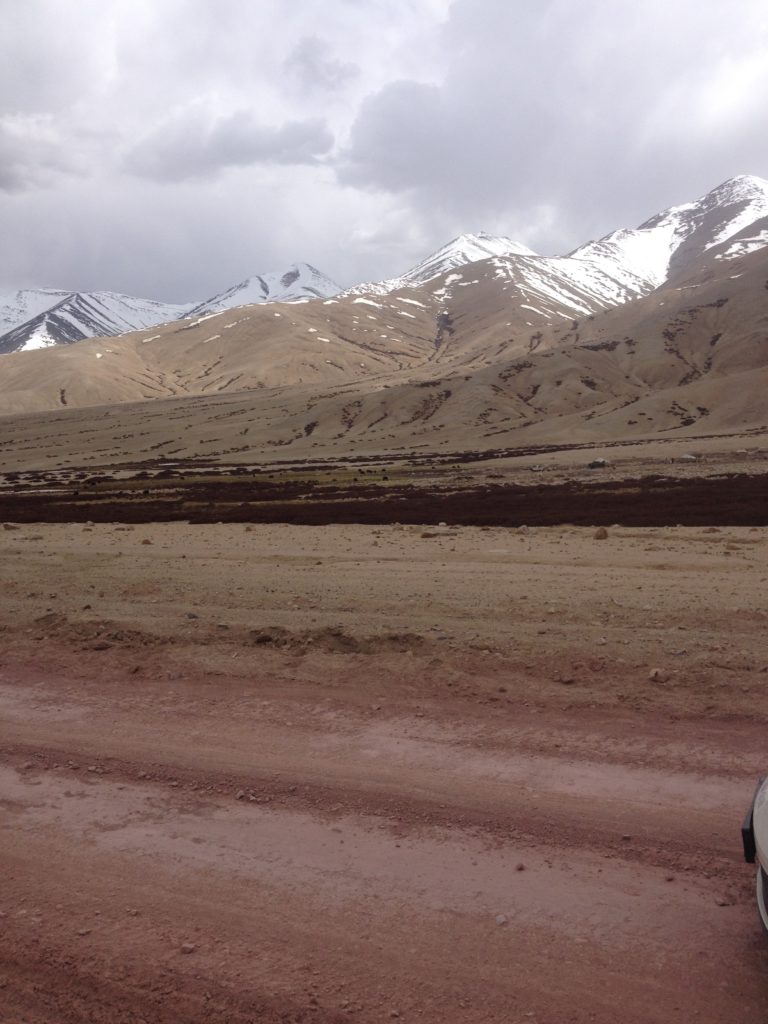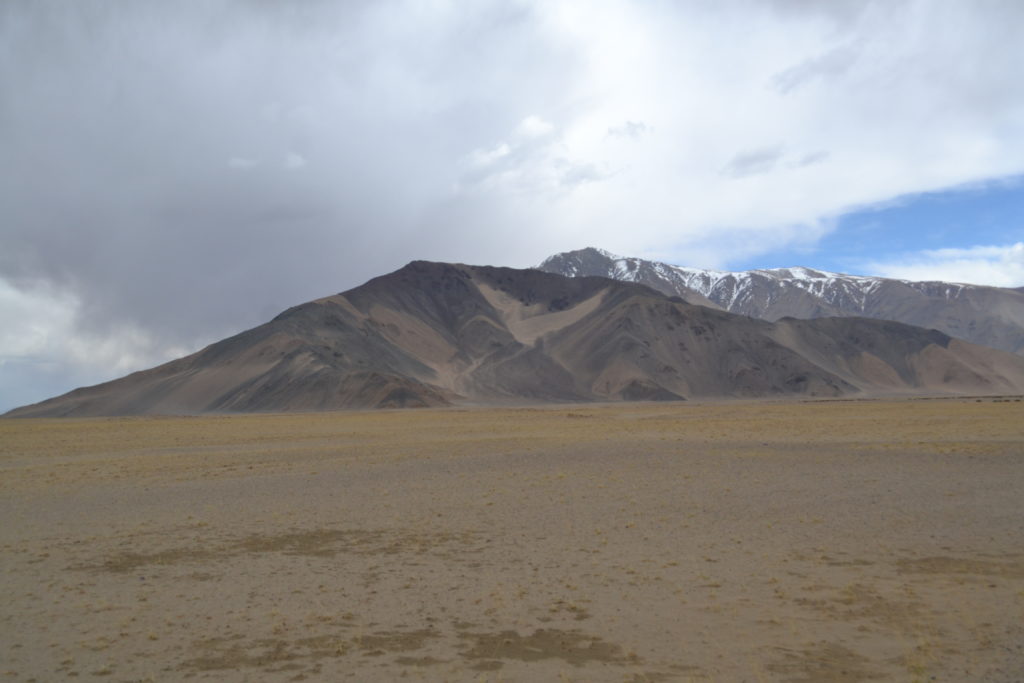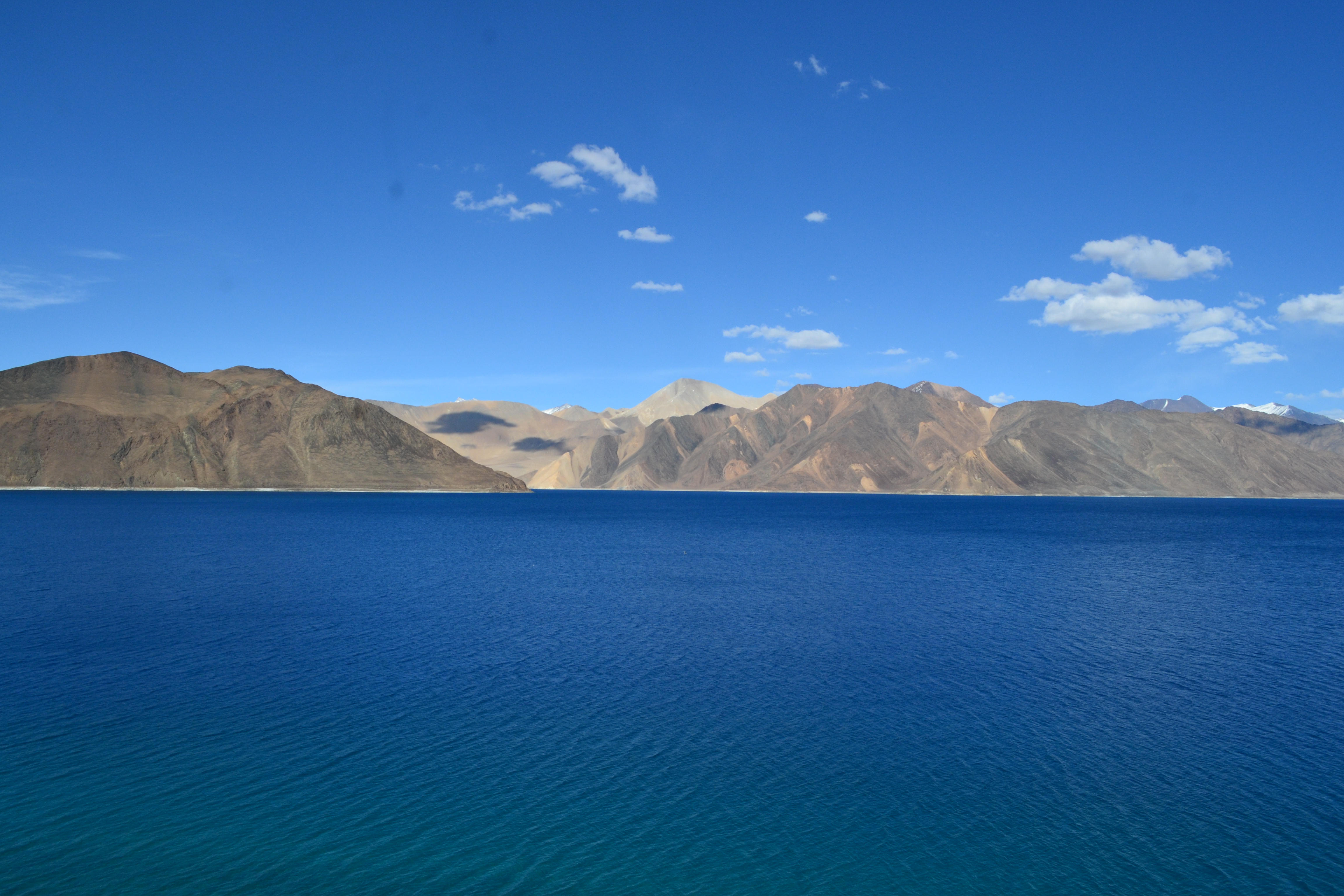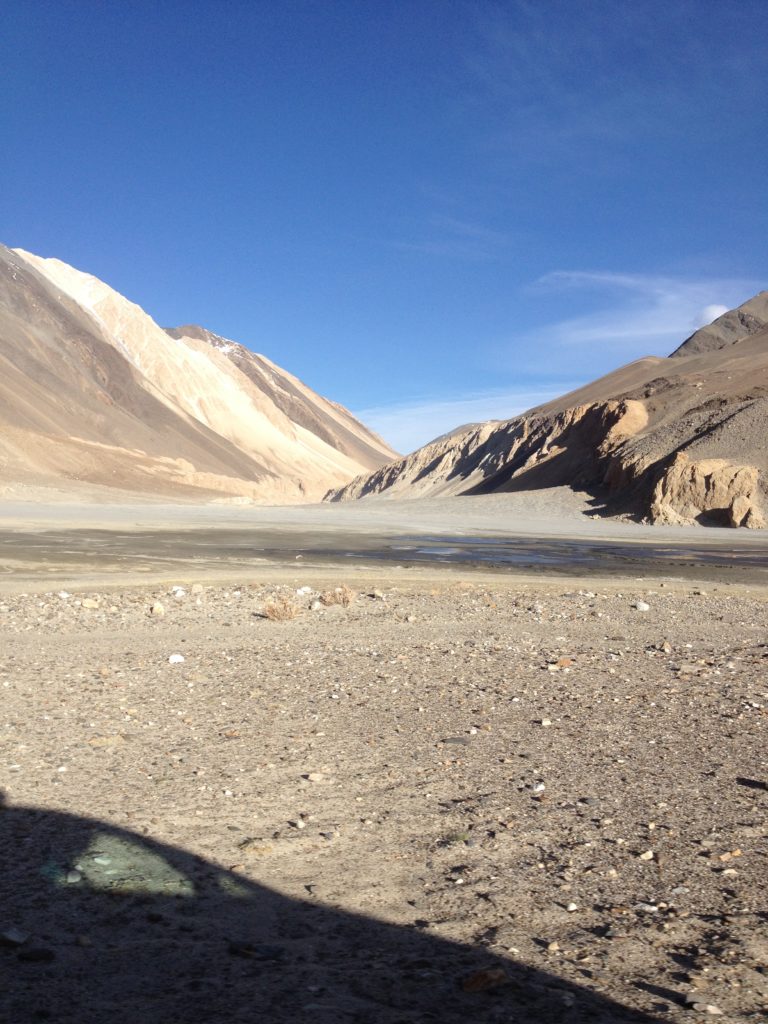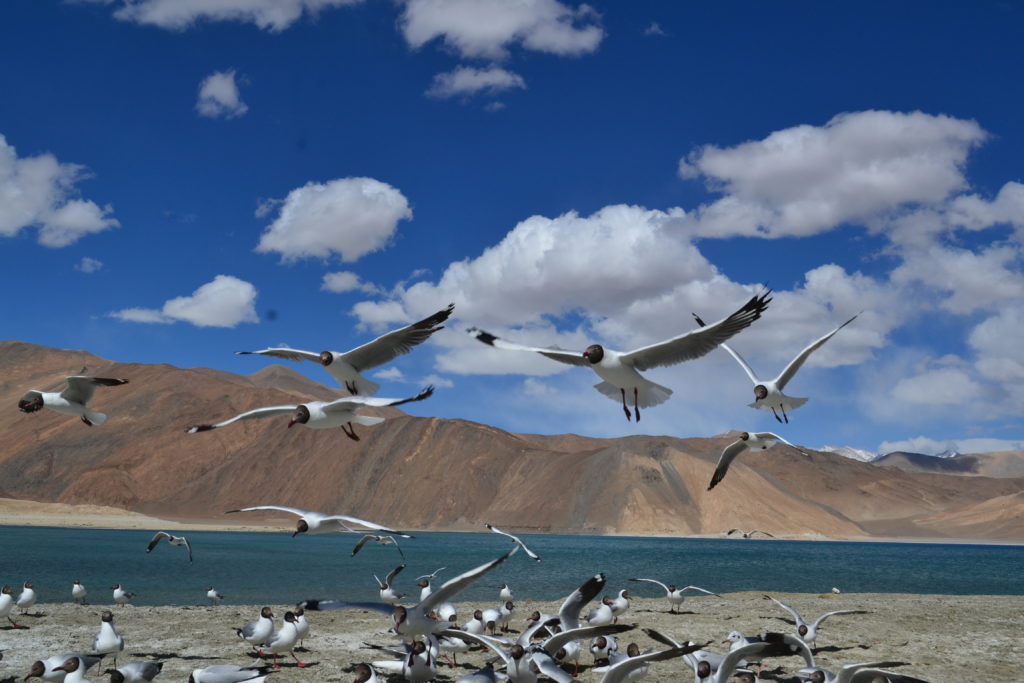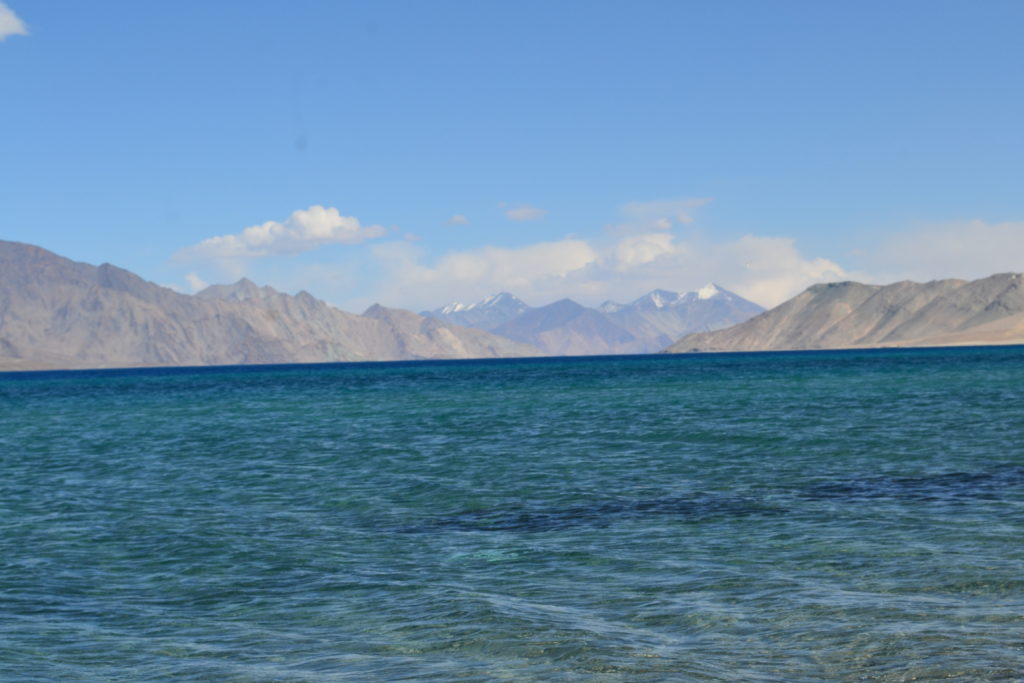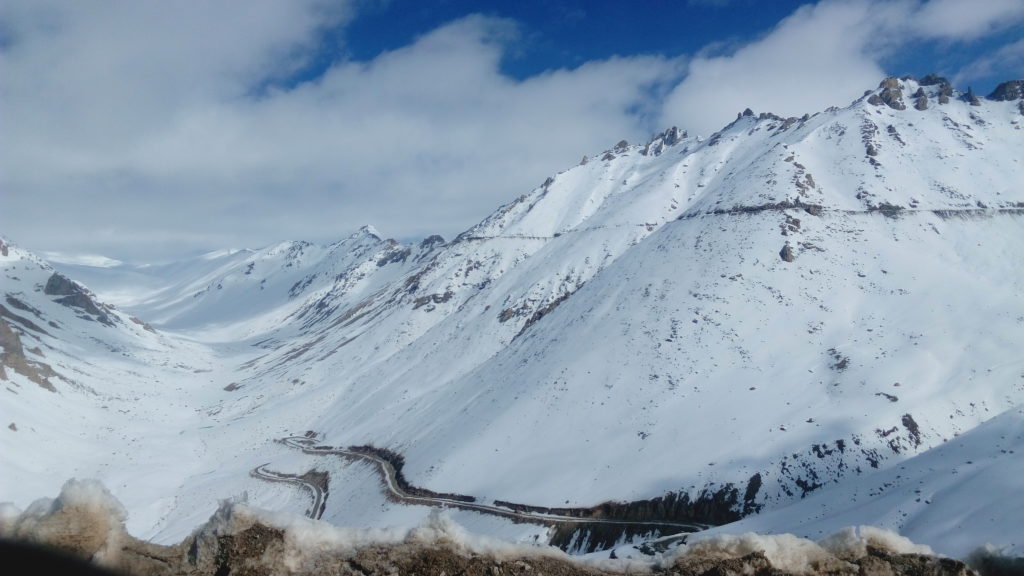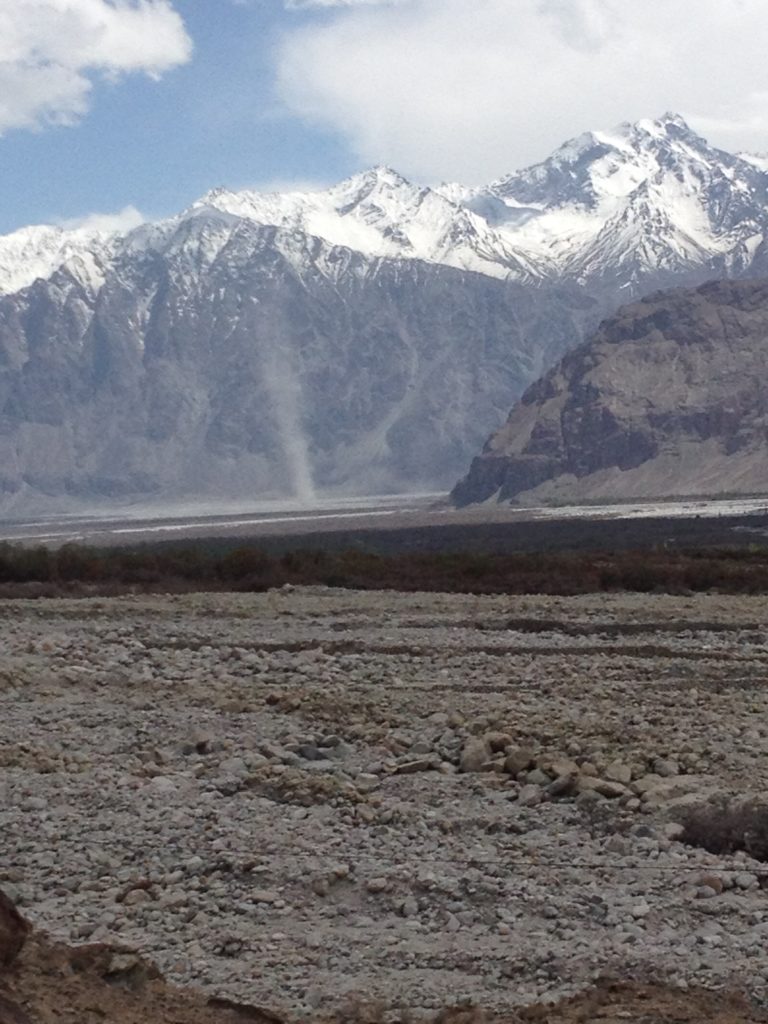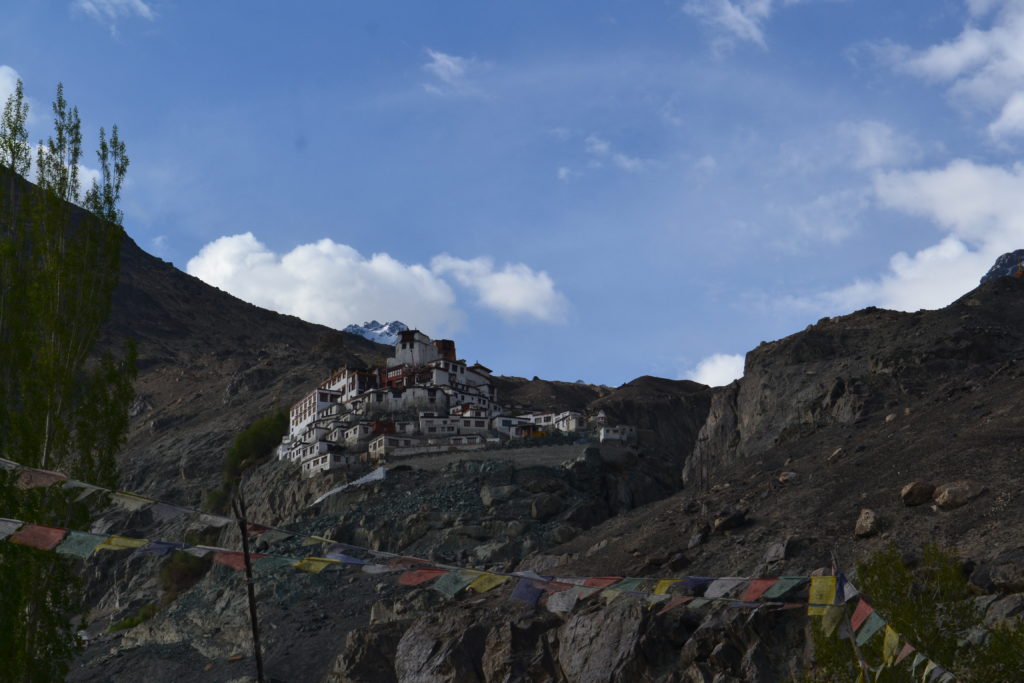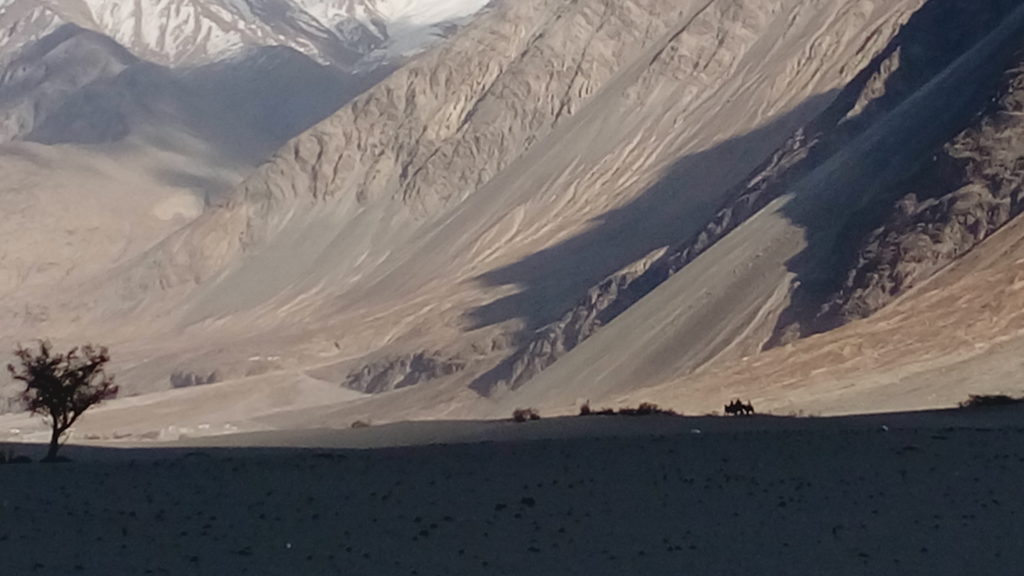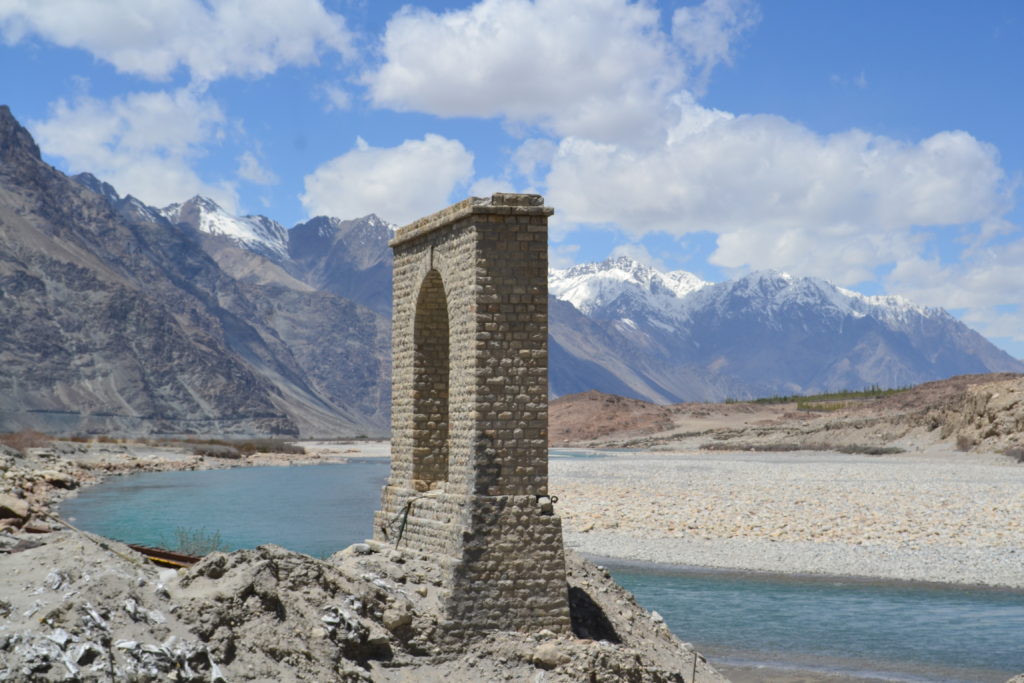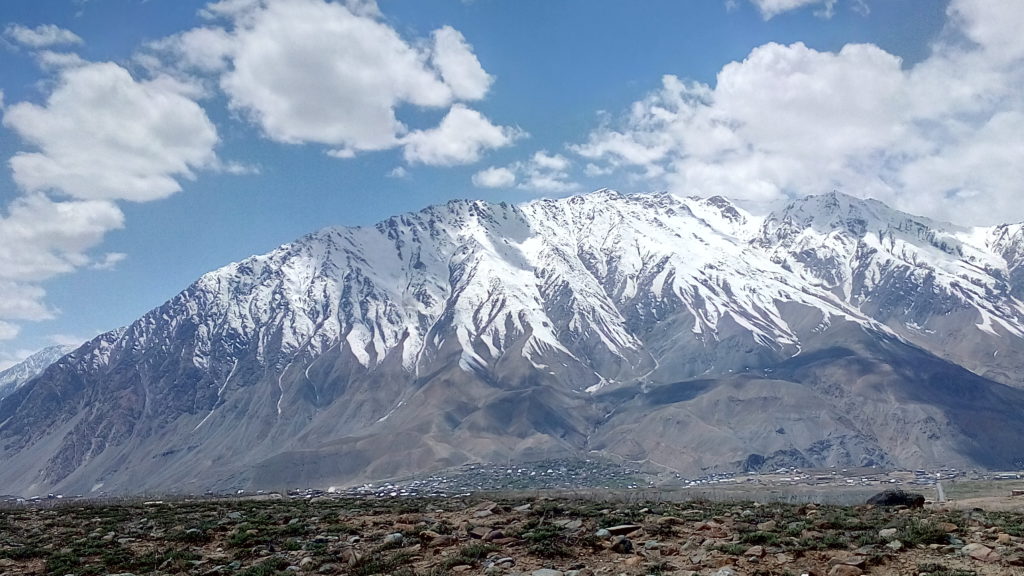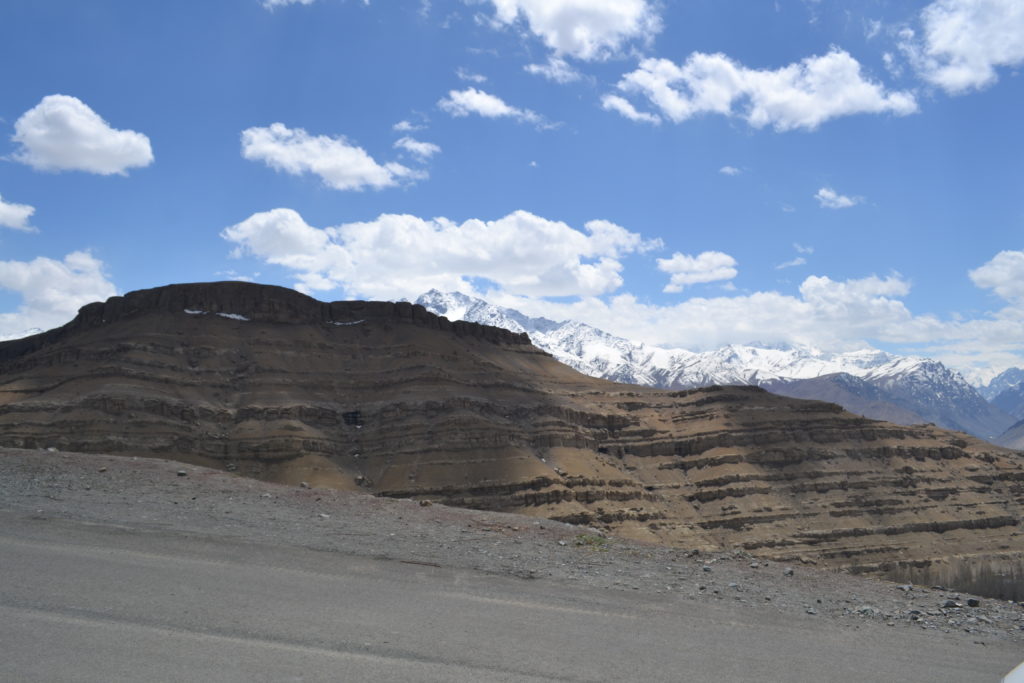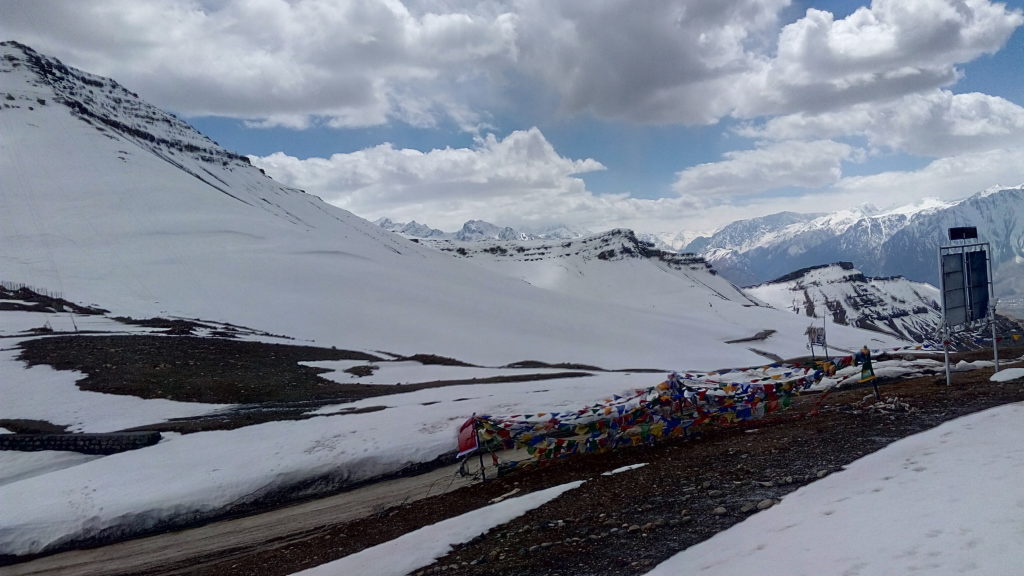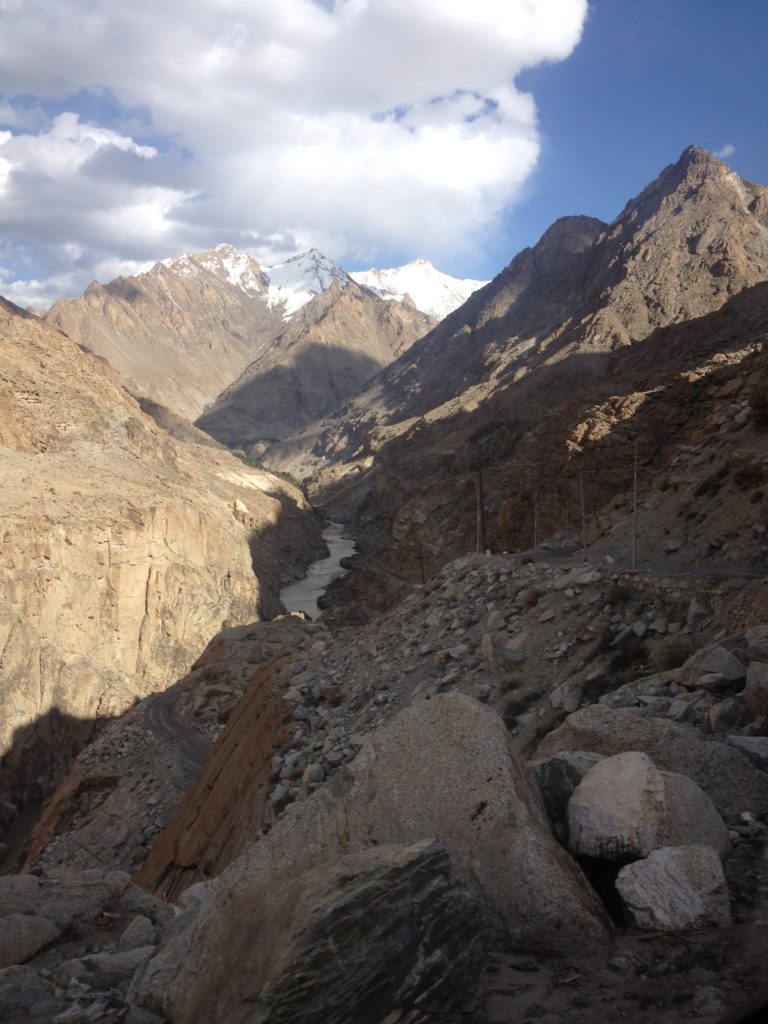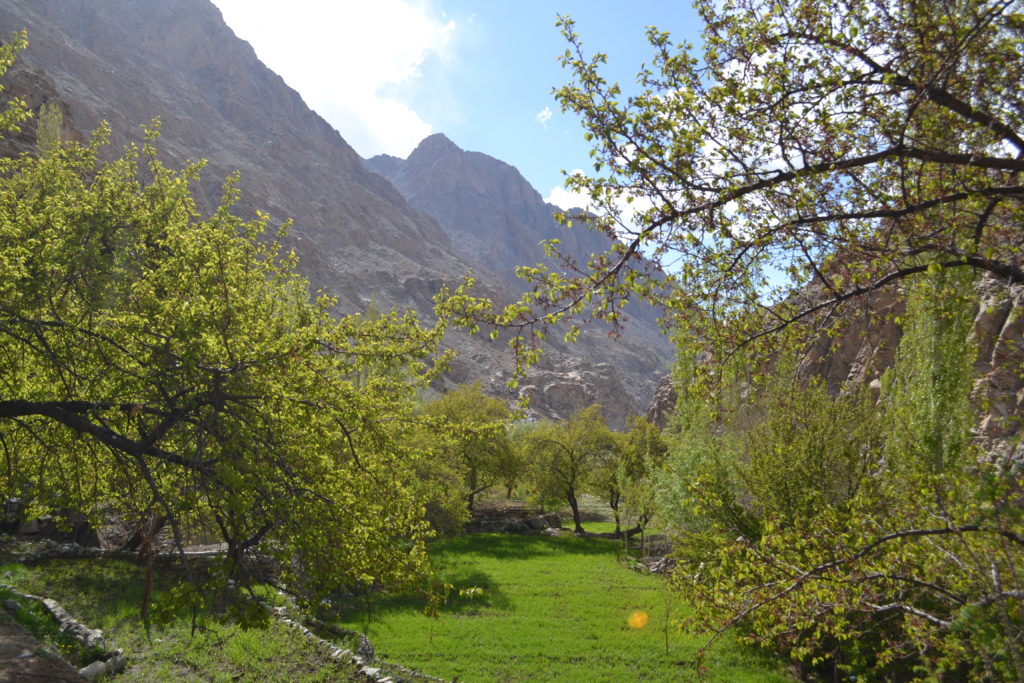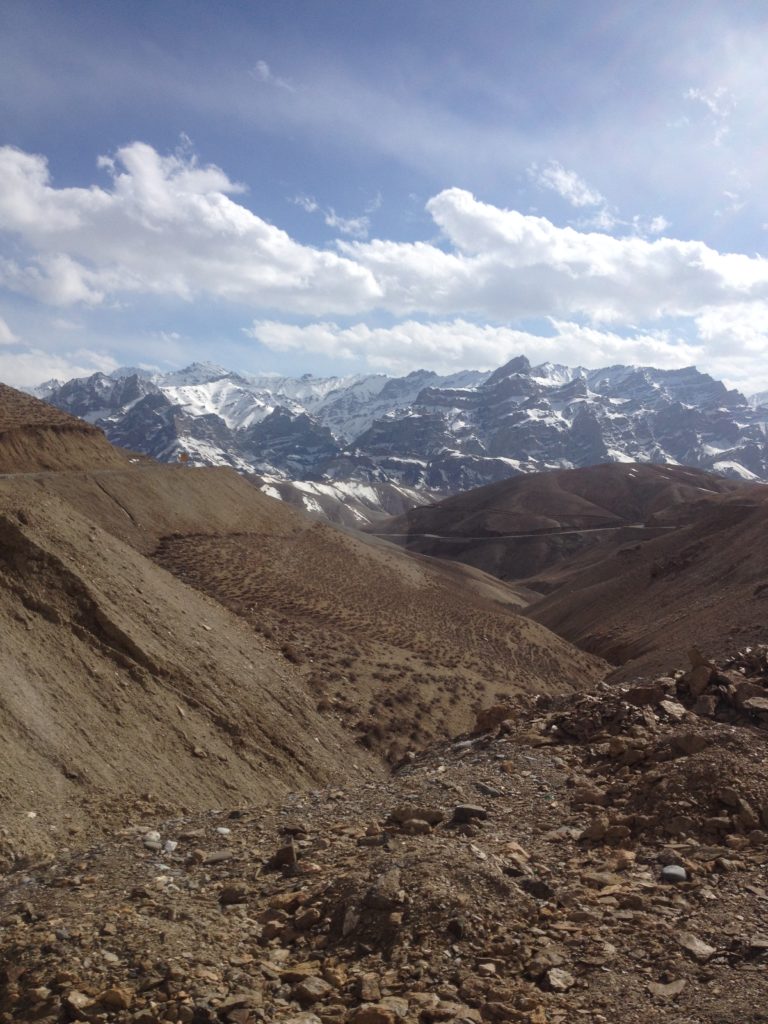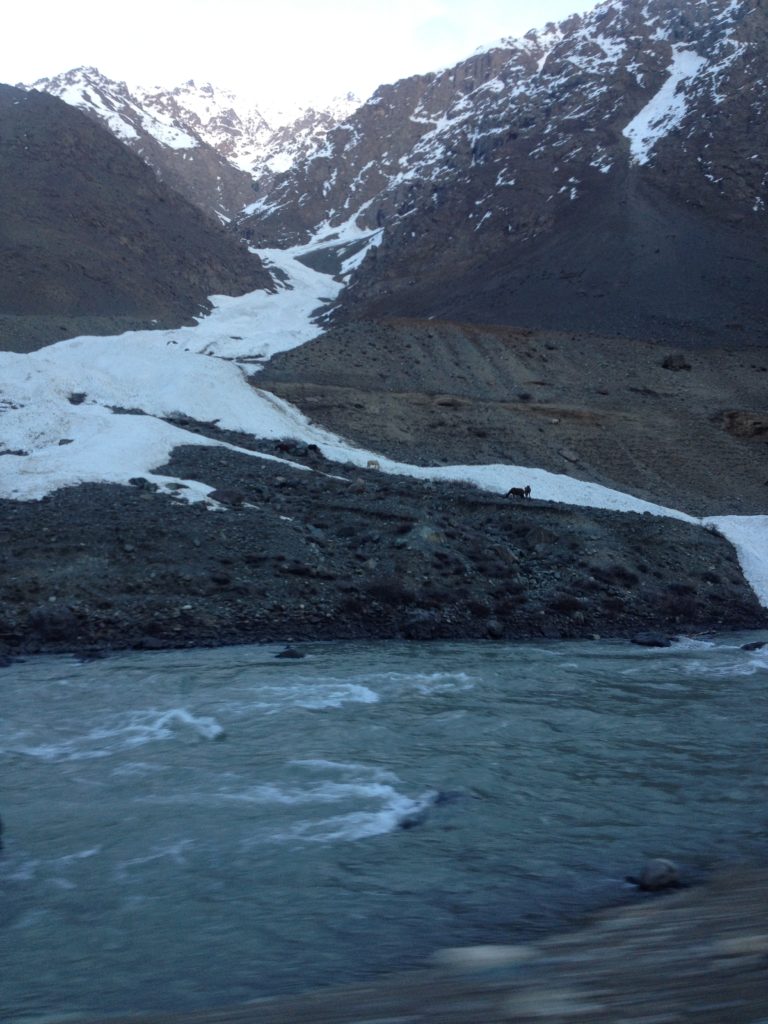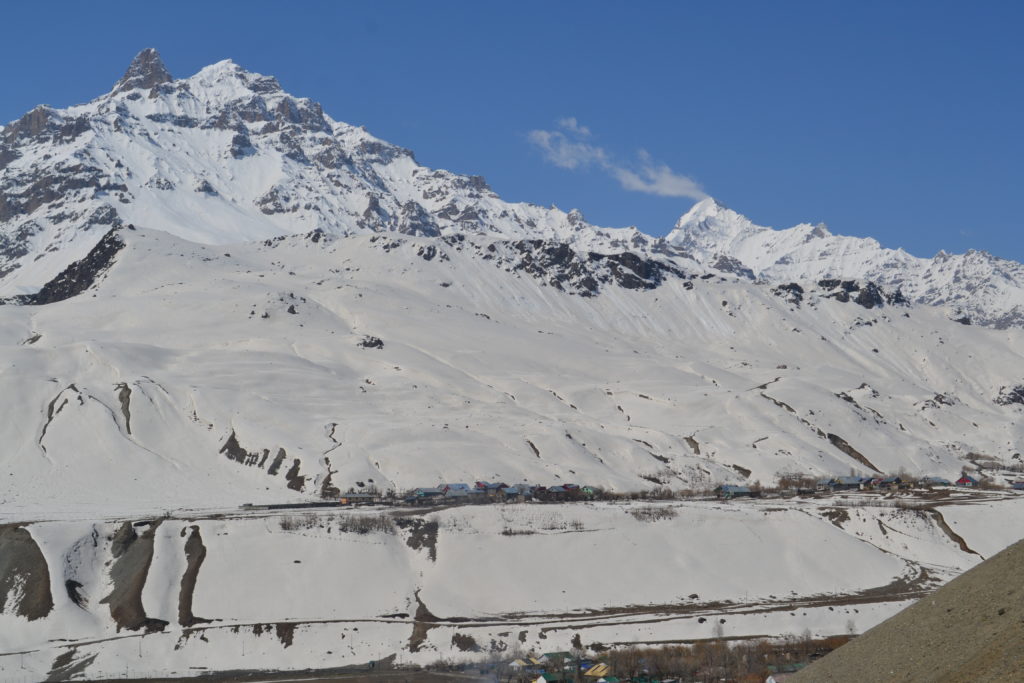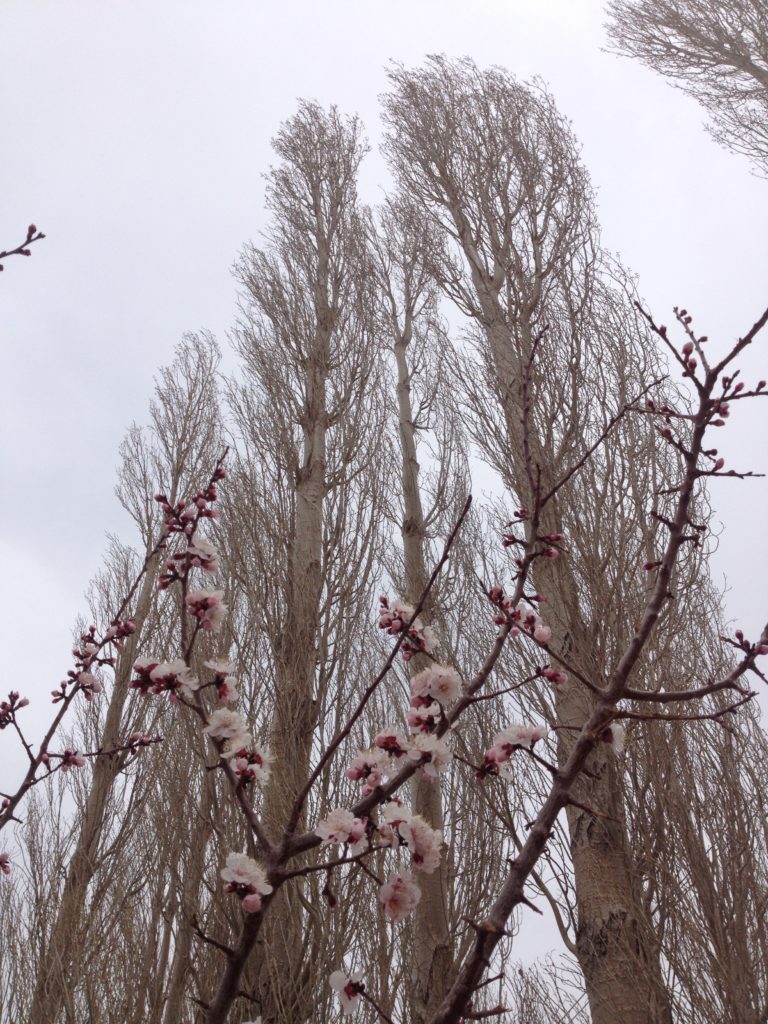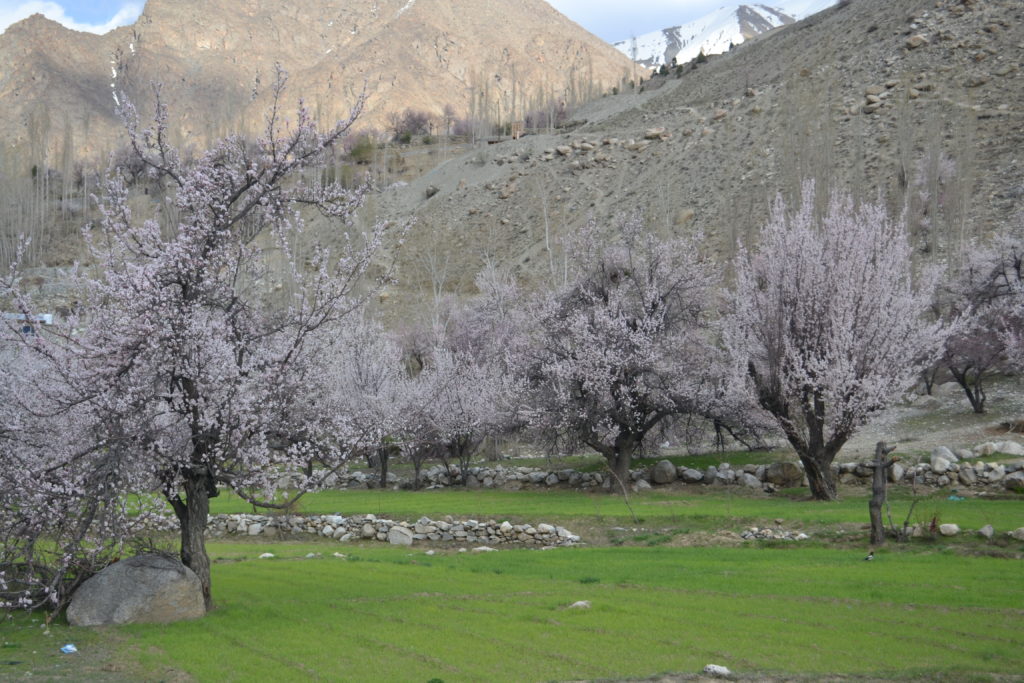Come, have tea. The pretty girl says, hanging out of the window of her wooden house. The invites are pouring in on this lovely sunny day. I ruefully decline. I’m not alone and we are running awfully late as it is.( the time plan goes further awry when I found the aunt had accepted someone else’s.) But I ask if I can take her picture. In the by lanes of this tiny village, the mousse brown house makes a perfect frame for her in her sparkling white hijab. Wandering back through the labyrinth of lanes we cross a mosque and exchange greetings with a matriarch sitting outside her house and a wizened old man reading. The driver has a bemused look when we can’t find half my clan. He points to a house in an alley. The girl who was chatting with the aunt on the road has taken the rest home. They are sitting on a carpeted floor with the man of the house, a ‘doctor sahib’, his wife, daughter in law and the extended family. He shows videos of him trudging through snow bound mountains to give vaccination shots to babies. Kashmiris have no furniture in their house, I was told. Well, if I had wall to wall carpeting like that, neither would I. The last few hours in Gurez Valley are tinged with an old-world charm and simplicity, that can be found, I suppose, in the backlanes of villages time has little time for.
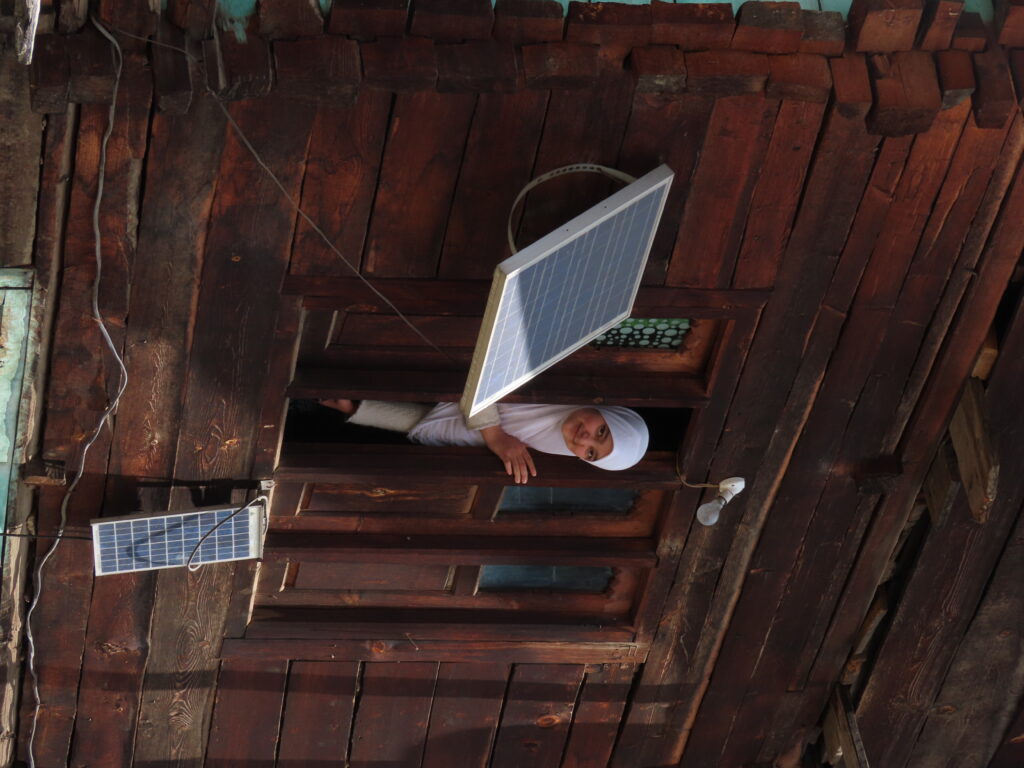
Soon we reluctantly retrace our path back to Razdan pass where we had come from the day before, with a last view of this picturesque valley at the curve of the towering craggy range and the lake formed by the dammed Kishanganga river.
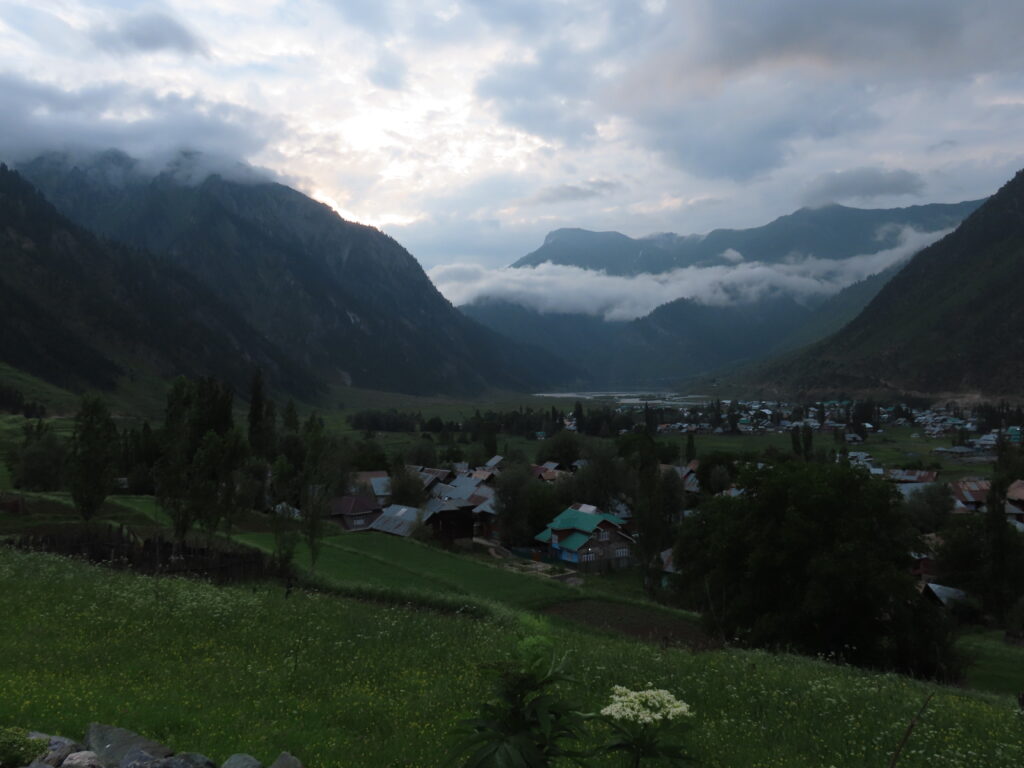
On the Road through Iris Pass
We crossed Bandipore town to climb into the forested mountain, leaving luminescent step-fields and scattered hamlets by the side. The first stop is for a picnic breakfast by the road under the low branches of a dark deodar. After making a tiny dent in the food packed for an entire army by the sister, and chasing elusive birds twittering all around, we are back on the road. Soon the last of the trees give way to the bare crest of the range.
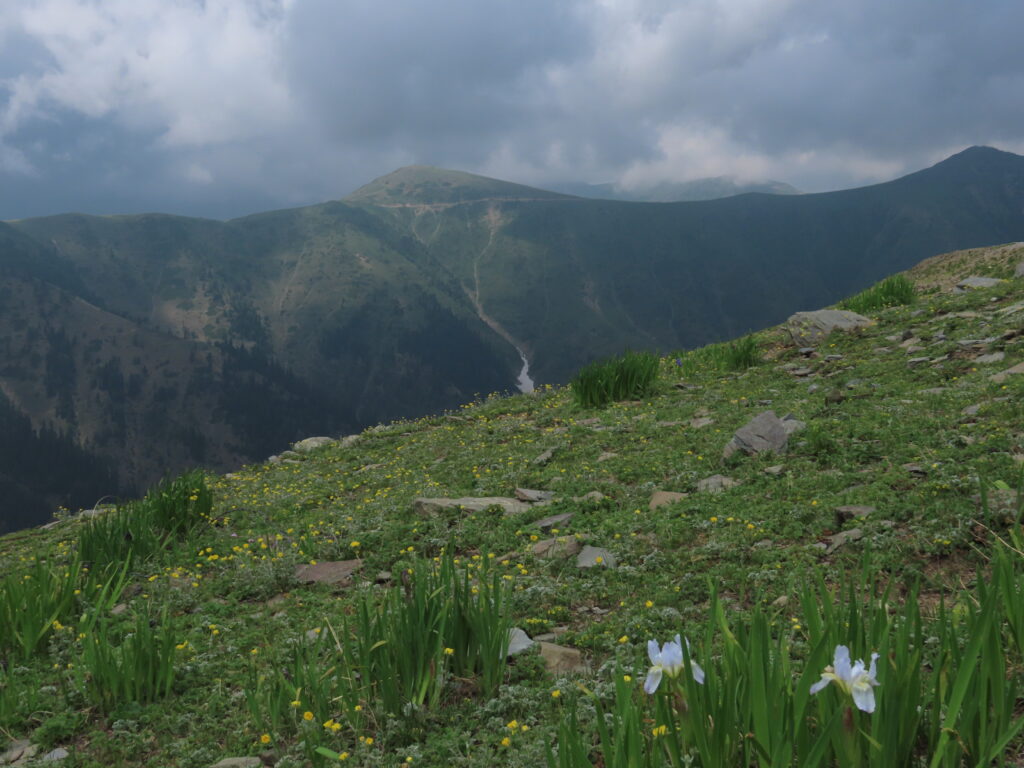
A passing drizzle makes us skip halting at the Pir Baba’s shrine. Razdan Pass, the gateway to Gurez, lies buried under snow for months but summer makes it melt to make way for grazing sheep and, as we stop to discover, fields of wild iris shaking in the icy winds that blow the clouds across. I spot white iris for the first time. Then the path descends past birch trees growing at crazy angles. Lower down, frozen streams fill the folds in the mountains and a few tents mark the dwellings of the Gujjars. The valley narrows till we cross the dam on the Kishanganga river that gets renamed as soon as it crosses the border.
Another river story Along the Lohit on the Long Road to Walong
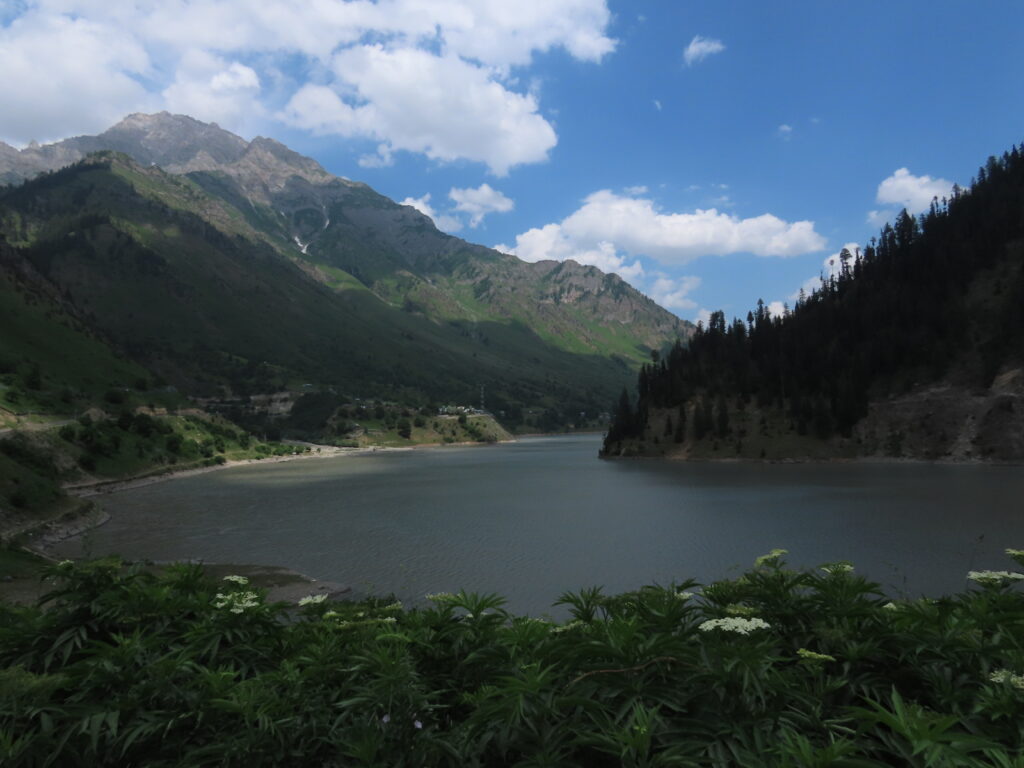
The Vale of Vistas
A boomerang shaped reservoir cradled in the nook of a steep mountain range, lush green with craggy tops, has come up because of the dam. Gurez valley stretches between the ranges in a perfect U till the famous ‘Habba Khatoon’. It stands seemingly alone at the end, surrounded only by lore of the tragic poetess-queen who lent her name to this perfectly conical rugged mountain.
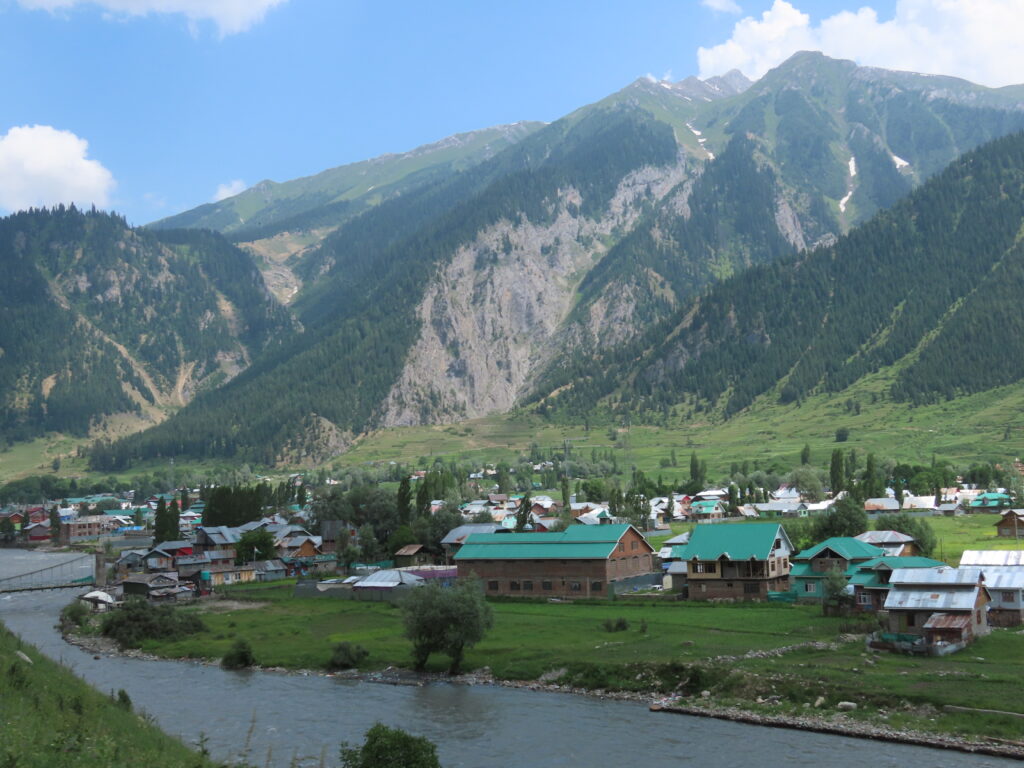
She wandered in the valley and up the mountains when her husband, Yousuf Shah Chak, the ruler of Kashmir was taken by Akbar to Bihar, never to return. In between lie small hamlets surrounded by fields and the overgrown village of Dawar, by the side of a rushing river. The mountain side is covered in patches of thick forest topped with rocky peaks with massive overhangs providing a perfect habitat for bears and other animals.
Read about Discovering Dibang Valley, the Last Frontier
Relearn the Art of Rambling
The plan at Gurez is to not have any plan. Just be!… And ramble…..Take off in any direction… up the hillsides, into the bylanes of Dawar. We reach late in the afternoon after an easy journey of about six hours. The weather has packed up so our afternoon walk plan gets shelved. In the mountains, man proposes and weather god disposes! So, we take a drive up to a Kandiyal Top to see the sunset. It is on an outcrop with a ringside view of the days last rays coming through a perfect V in the mountains and light up the lake or like today, let the clouds stream in. Then we ramble down the road savouring the beauty around. The weather is perfect for a cup of coffee at the tiny wooden café in the middle of town. The bakarwal dogs outside charmingly beg to be fed. The play of light and colours flit on Habba Khatoon’s stony face. Nothing like heartbreak or sublime surrounding to turn one into a poet like the queen. (No chance here!)
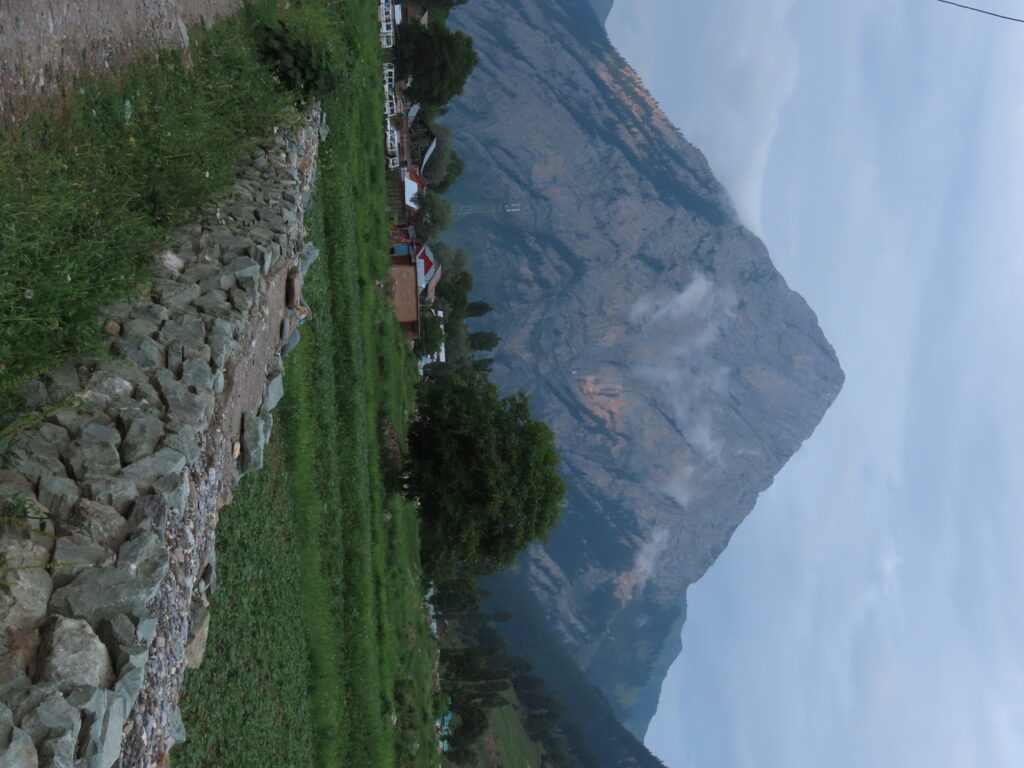
Next morning after a short drive on the road to Tulail we cross the river towards the spring at the base of Habba Khatoon. The weekend crowd is more of a dampener than the cold water and we turn back to the village enroute. Ditching the vehicles we walk along the steep mountainside dotted with walnut trees and wild daises growing near a village of old wooden houses. The people in this valley are Dards with their own language. A memorable morning of socializing ensues.
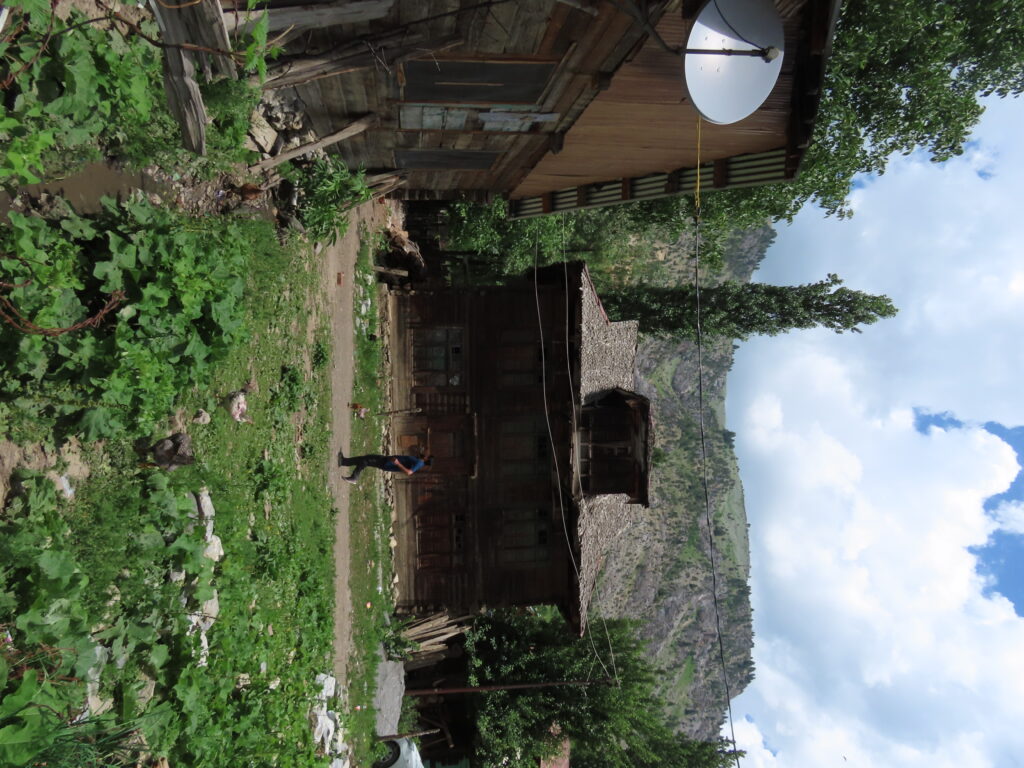
The Legend of Kheer Bhawani
With an evening to spare after a pilgrimage to Amarnath is done and dusted (and literally how!) we close the trip to the valley with a visit to Kheer Bhawani. Winding through fields of green paddy braided with tiny streams shaded by weeping willows we made our way to the temple of the goddess. This area was more of a marshland once. Streams that web their way around still have slim shikaras moored here and there.
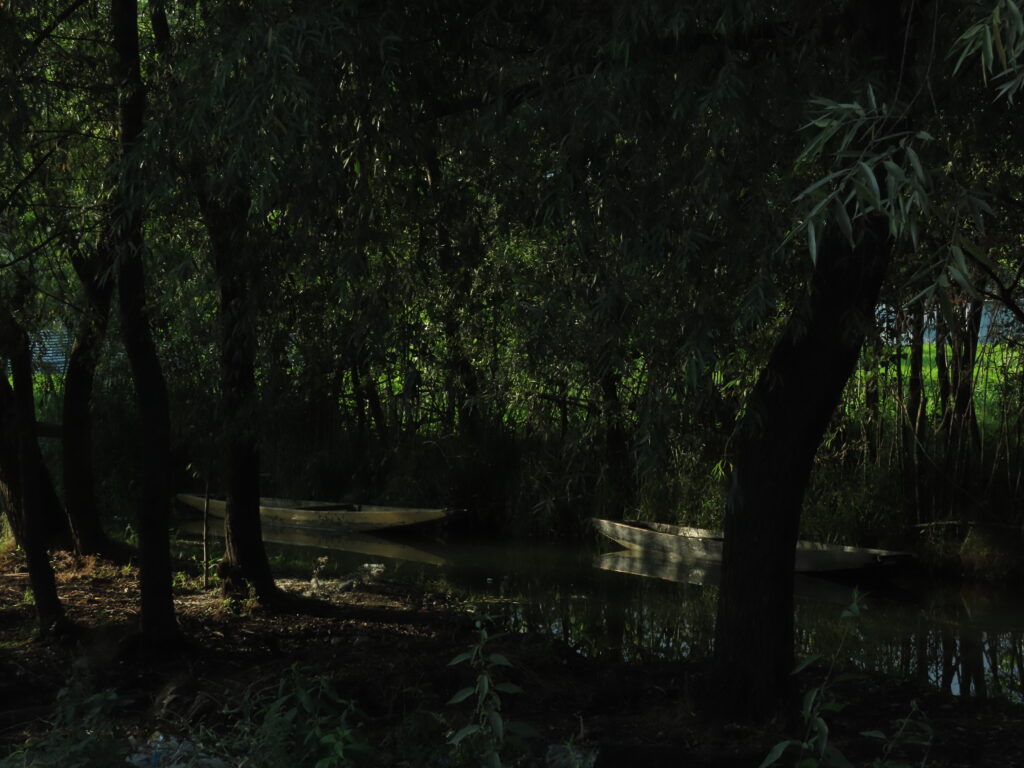
A woman rows one, laden with provisions, in a stream that disappears into the backyard of houses. The route ends in the middle of Tulmulla village square after crossing a bridge. A massive red gate and wall surround the complex of the goddess. Inside small shrines dot the central area, and in the middle, surrounded by towering white bark chinars, lies the colour changing sacred spring from which the statue of Sheer Bhiwani and a shivling, their origins lost in antiquity, were discovered at some point in time. Now, in the middle of the spring a tiny ‘temple’ houses the goddess where she has the place of prominence. Through the water changing colour she portends the luck of the inhabitants of the valley. When we enter it is icy blue and then milky white. During the 1947 and Kargil war it turned black and during the recent pandemic red.
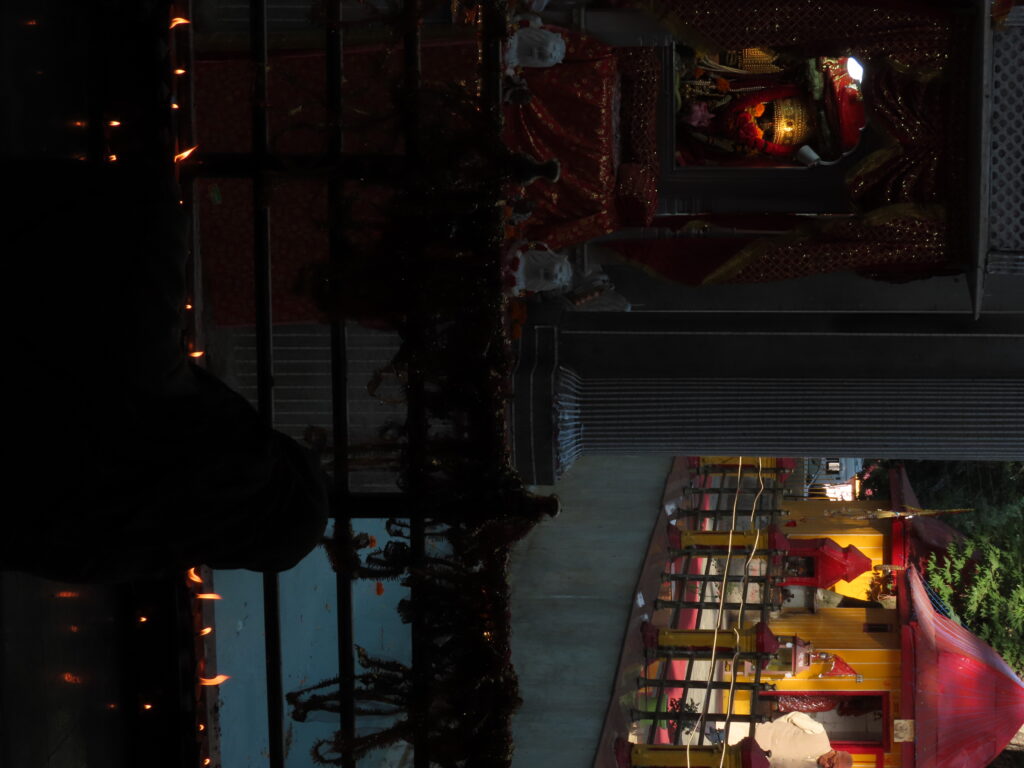
I made quite a pest of myself with the sister organizing the trip. Haranguing on about going to Gurez. A tiny valley still untouched by mass tourism and crass commercialization. To do what? Relearn the art of rambling! What followed was a trip to an other world of charm and tales.
Fact File
Distance
Srinagar to Dawar- Approx 137 km.
Srinagar to Kheer Bhawani- Approx 22km.
Best Time to Visit
Gurez Valley- May to October. It still remains cut off in winter.
